Creating a therapeutic environment requires thoughtful consideration of every design element, from furniture placement to color psychology. The physical space where therapy occurs profoundly impacts client comfort, trust, and healing outcomes. Modern therapist room design emphasizes trauma-informed principles, biophilic elements, and cultural inclusivity while maintaining professional boundaries. Whether you're establishing a new practice or refreshing an existing space, these design concepts integrate evidence-based approaches that support both client well-being and therapeutic effectiveness. Each design theme represents a complete environmental strategy that considers lighting, layout, materials, and sensory elements working together to create spaces that promote safety, healing, and meaningful therapeutic connections.
1. Biophilic Therapist Room with Living Wall Integration
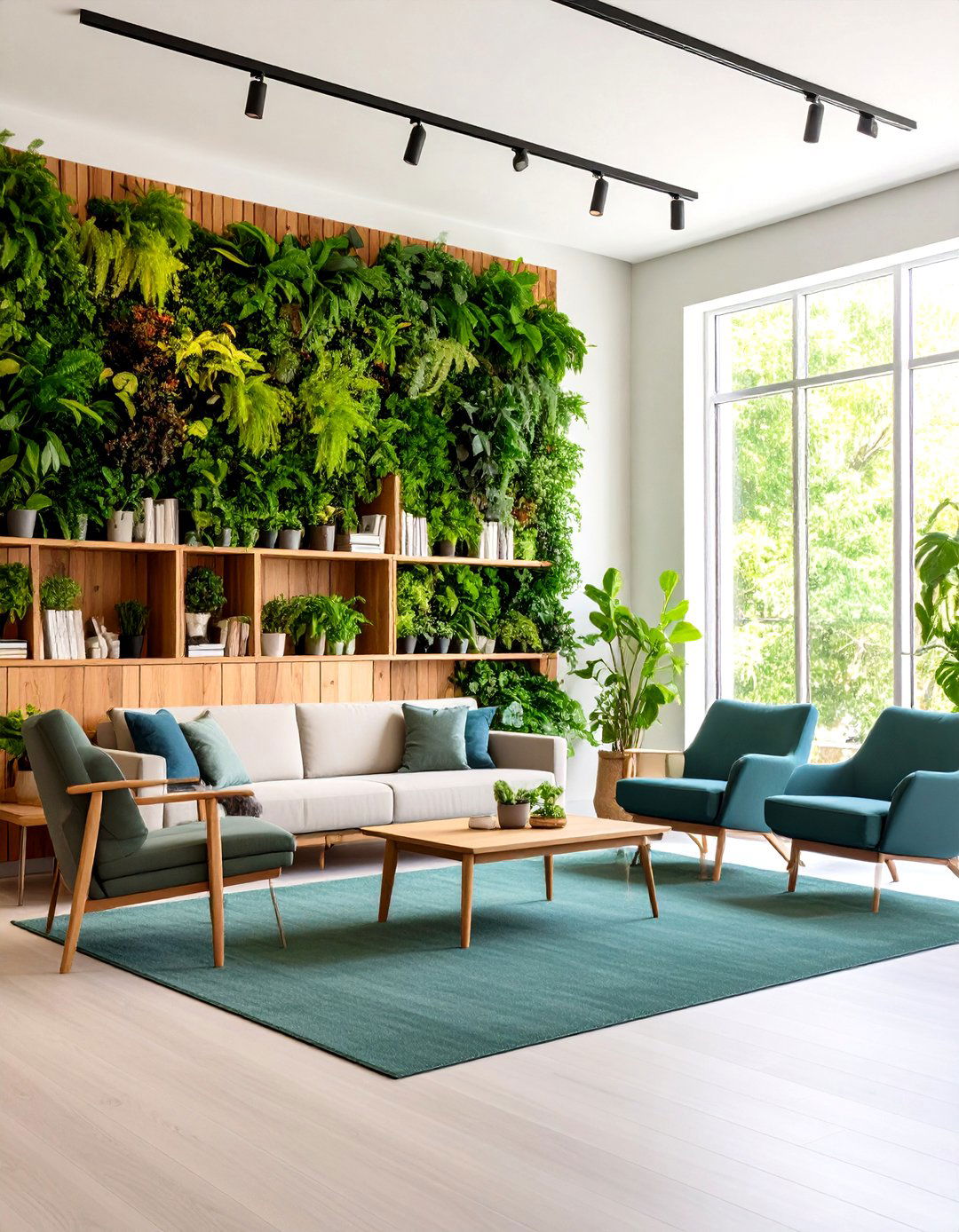
Transform your therapeutic space into a nature sanctuary with a stunning living wall as the focal point. This biophilic therapist room design incorporates a vertical garden system along one wall, featuring low-maintenance plants like pothos, snake plants, and peace lilies that naturally purify air while creating visual calm. Complement the living wall with reclaimed wood furniture, including a warm oak desk and comfortable seating upholstered in earth-toned fabrics. Natural fiber rugs in sage green anchor seating areas while stone-textured accent walls add organic depth. Large windows maximize natural light, supplemented by warm LED fixtures that support plant growth. The color palette draws from forest hues—deep greens, warm browns, and soft cream tones that promote relaxation and connection to nature.
2. Minimalist Scandinavian Therapist Room Design
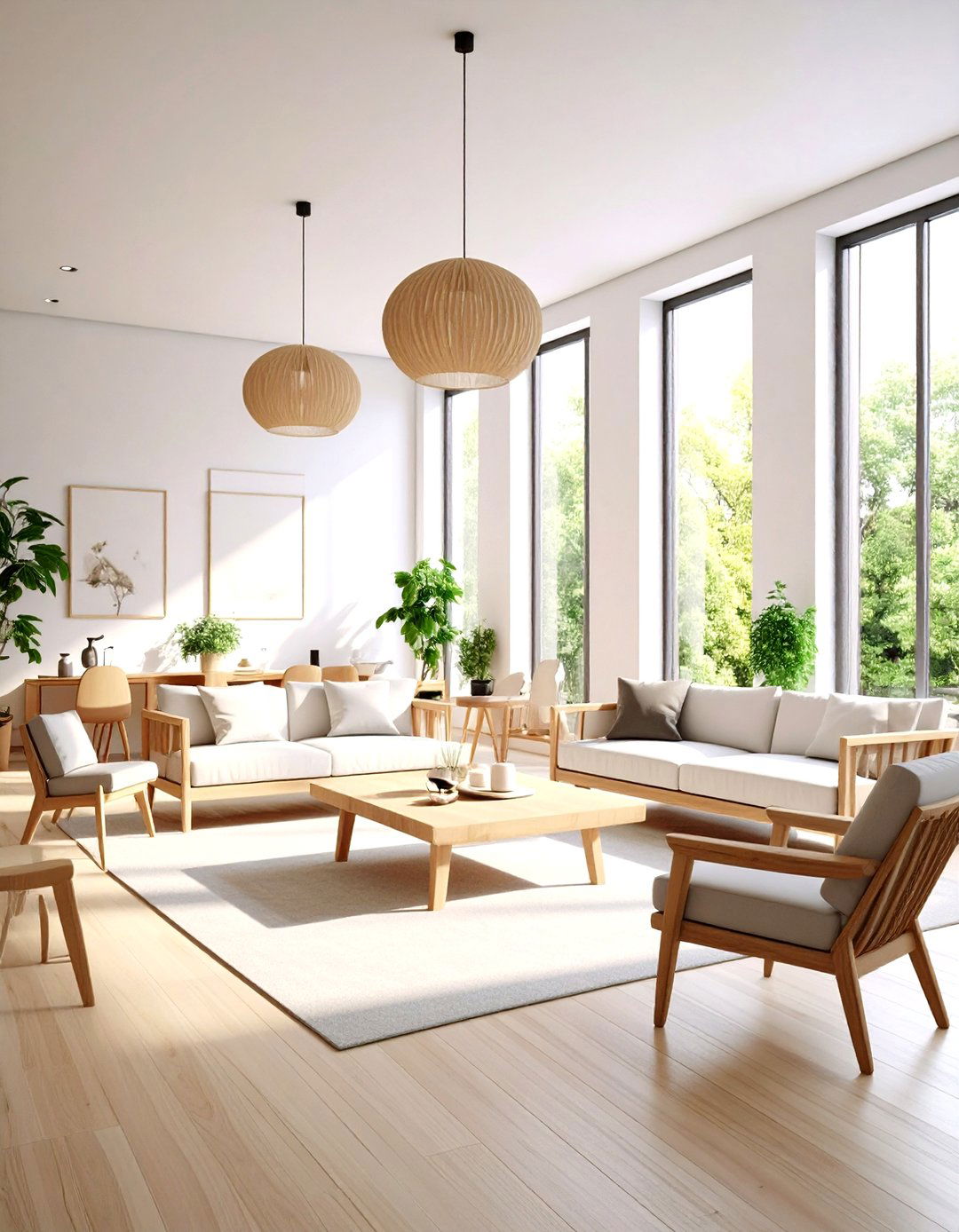
Create a serene therapeutic environment through clean Scandinavian design principles that emphasize simplicity and functionality. This minimalist therapist room features white-washed walls, blonde wood furniture, and carefully curated decor that eliminates visual clutter while maintaining warmth. Choose low-profile furniture including a streamlined desk, ergonomic task chair, and comfortable seating in neutral linen fabrics. Strategic storage solutions like built-in shelving and hidden filing systems maintain organization without disrupting the peaceful aesthetic. Natural light streams through unadorned windows, while pendant lighting with warm bulbs provides evening illumination. Incorporate subtle textural elements through woven throws, simple ceramic planters with single-species plants, and one or two pieces of abstract art in muted tones to create visual interest without overwhelming the tranquil atmosphere.
3. Trauma-Informed Therapist Room with Safety-First Layout
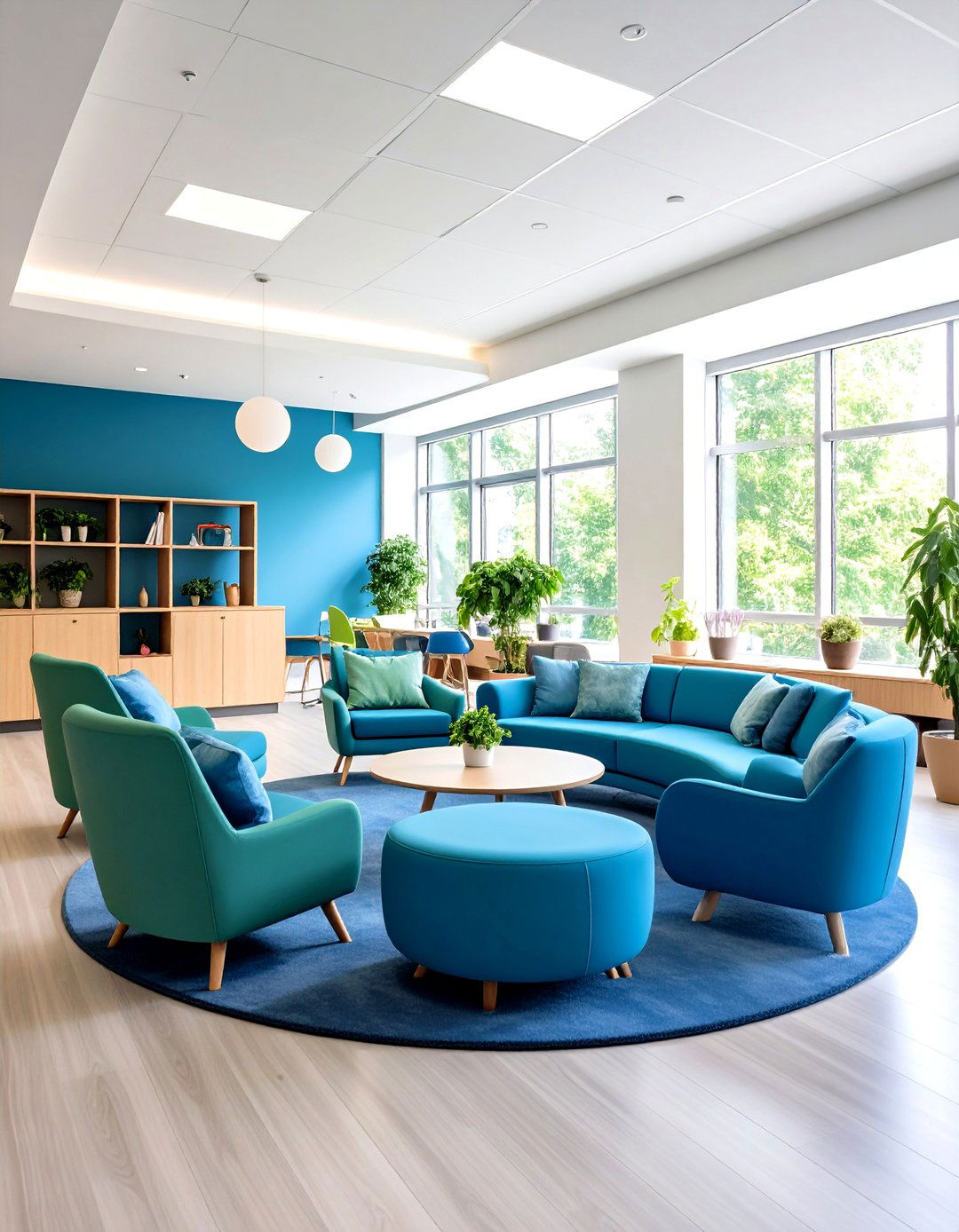
Design a therapeutic space prioritizing physical and emotional safety through trauma-informed principles that support vulnerable clients. This specialized therapist room layout ensures clear sightlines to exits, with furniture arranged to avoid blocking pathways and doorways. Choose soft, rounded-edge furniture in calming blue and green tones, avoiding stark whites or institutional colors that might trigger anxiety. Soundproofing materials integrated into walls and ceiling construction ensure complete privacy and confidentiality. Lighting design includes dimmable options and avoids fluorescent fixtures, instead utilizing warm LED systems that create comfortable illumination levels. Multiple seating options accommodate different comfort preferences, while accessible features ensure mobility for all clients. Storage solutions keep personal items secure and out of sight, maintaining clear surfaces that reduce environmental stressors and promote feelings of safety and control.
4. Culturally Inclusive Therapist Room with Global Elements
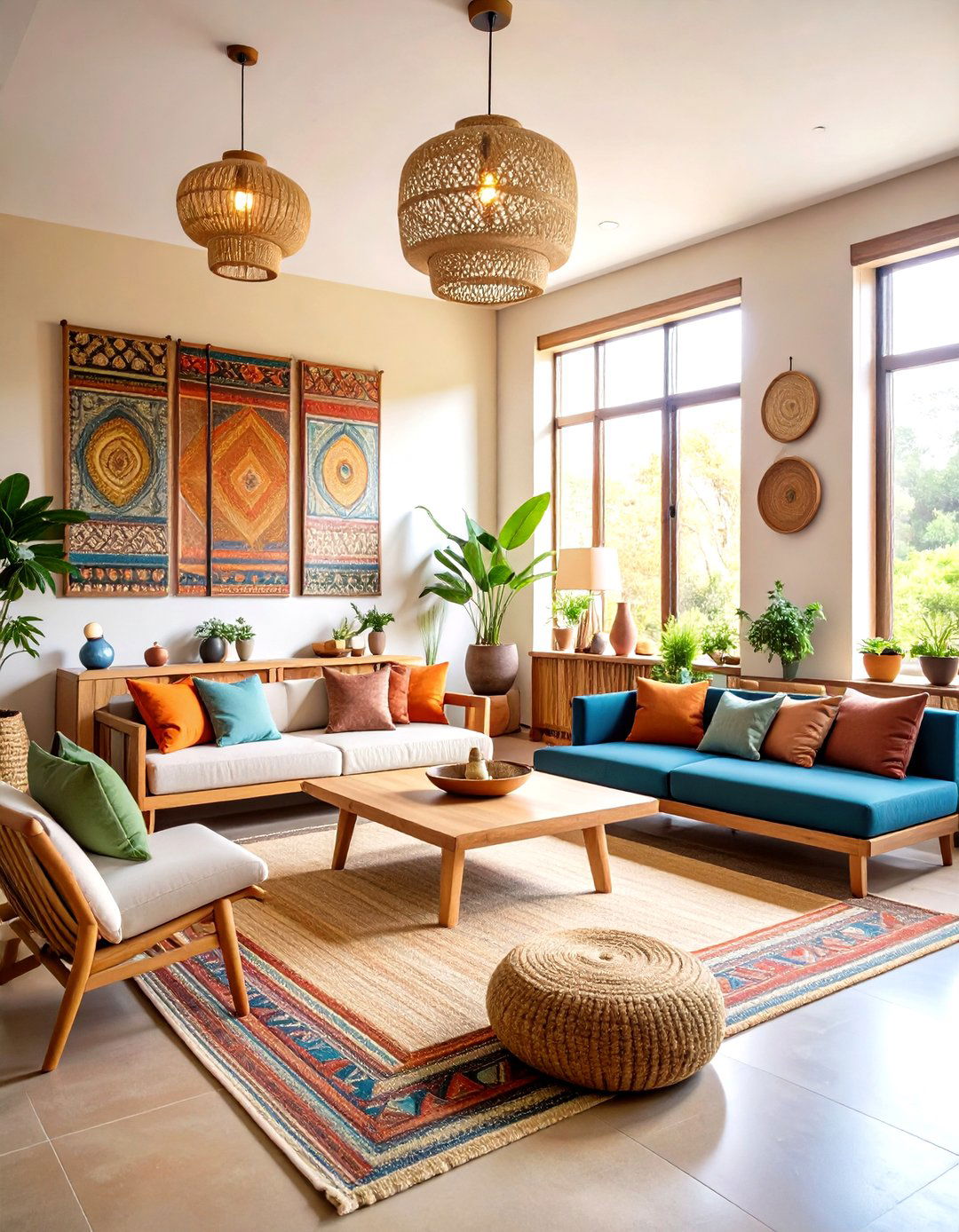
Celebrate diversity through thoughtful design that honors multiple cultural backgrounds while maintaining therapeutic neutrality. This inclusive therapist room incorporates artwork, textiles, and decorative elements representing various cultures, chosen respectfully to create welcoming spaces for clients from different backgrounds. Natural materials like bamboo, cork, and reclaimed wood provide universal appeal while honoring earth-based traditions found across cultures. The color palette draws from globally calming hues—warm terracotta, sage green, and deep indigo—that resonate across cultural contexts. Furniture includes comfortable seating options at various heights to accommodate different cultural preferences for formal or casual interactions. Textile elements like handwoven baskets, traditional patterns in throw pillows, and culturally significant symbols create visual interest while demonstrating cultural awareness and respect for diverse therapeutic needs.
5. Technology-Integrated Modern Therapist Room

Blend cutting-edge technology with therapeutic design to create efficient, modern treatment spaces that enhance both client experience and practice management. This contemporary therapist room features integrated charging stations, discrete cable management systems, and smart lighting that adjusts throughout the day to support circadian rhythms. A sit-stand desk accommodates various working positions while housing necessary technology infrastructure. Acoustic panels with modern geometric patterns provide sound dampening while serving as contemporary art elements. The color scheme utilizes sophisticated neutrals—charcoal gray, warm white, and steel blue—creating professional ambiance without feeling cold. Comfortable seating includes ergonomic options with subtle technology integration like built-in USB ports. Digital displays can showcase calming nature scenes or therapeutic tools while maintaining the space's modern aesthetic and functional efficiency.
6. Rustic Farmhouse Therapist Room with Comfort Focus
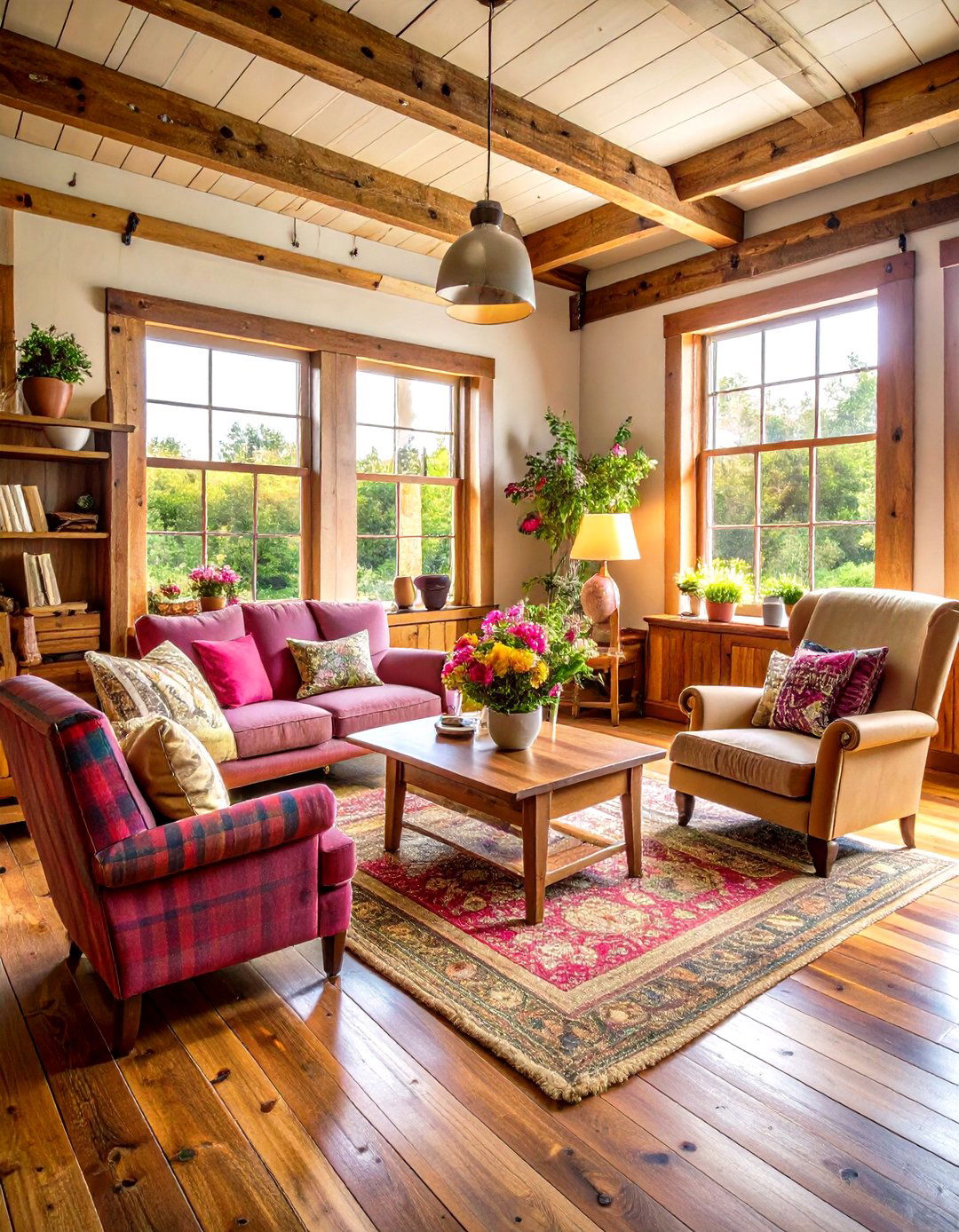
Create a welcoming, home-like therapeutic environment through rustic farmhouse design elements that promote comfort and reduce anxiety. This cozy therapist room features reclaimed barn wood accents, vintage-inspired furniture with distressed finishes, and soft textile layers that create warmth and approachability. Shiplap accent walls in soft white provide texture while maintaining lightness, complemented by exposed wooden beams and rustic light fixtures. Comfortable seating includes oversized armchairs in warm plaid or solid fabrics, positioned around a vintage coffee table that encourages casual conversation. Mason jar planters, vintage books, and carefully chosen antique accessories add personality without overwhelming the space. The color palette emphasizes warm neutrals—cream, sage, and soft brown—while natural materials and textures create an environment that feels more like a comfortable home than clinical office, encouraging clients to relax and open up.
7. Zen-Inspired Therapist Room with Meditation Elements
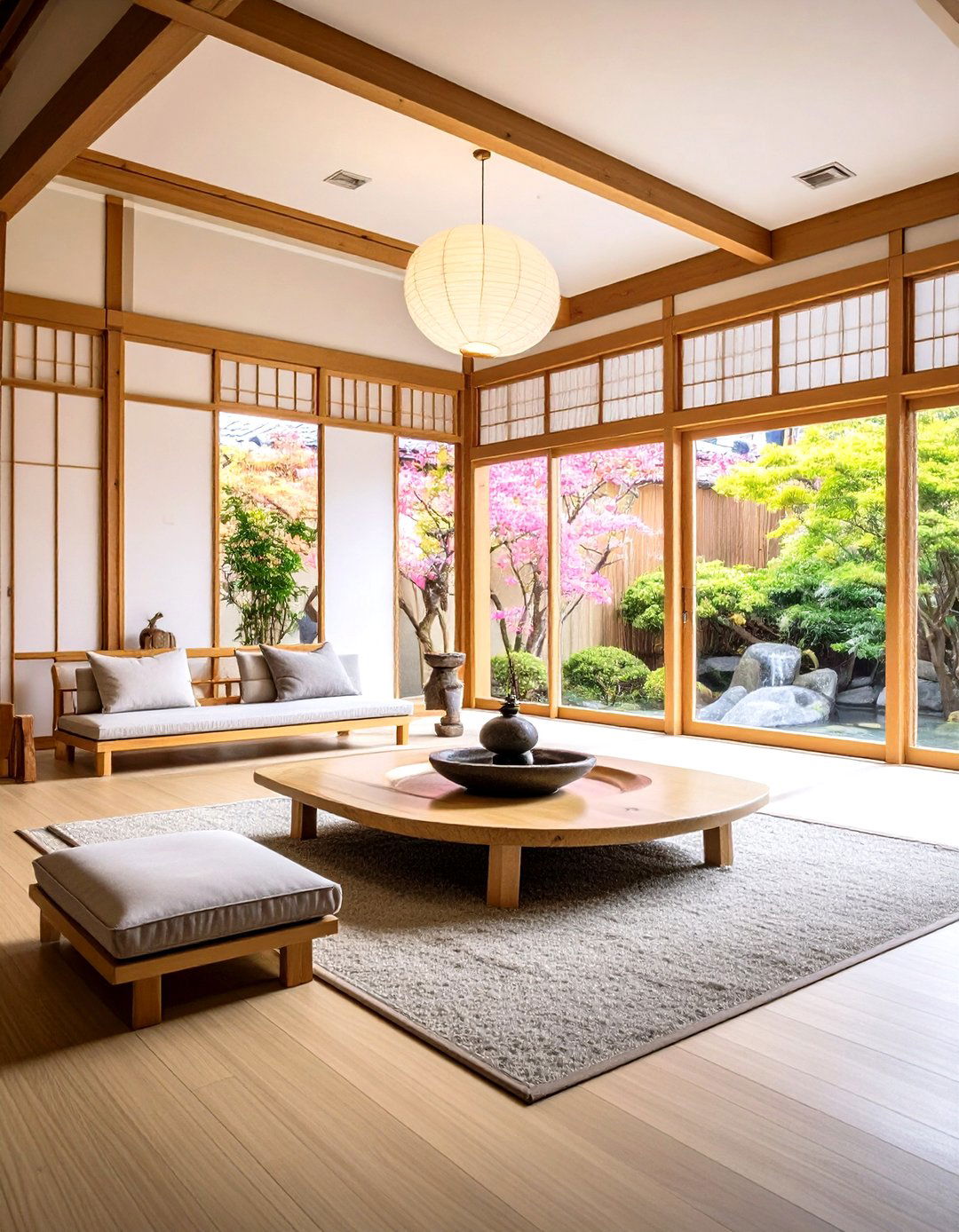
Transform your therapeutic space into a tranquil zen retreat that promotes mindfulness and inner peace through carefully balanced design elements. This serene therapist room incorporates meditation-inspired features including a small fountain, Japanese-influenced furniture, and minimalist decor that eliminates visual distractions. Low-profile seating arrangements encourage grounded conversations while natural materials like bamboo, stone, and organic cotton create textural harmony. The color palette draws from nature—soft grays, warm whites, and muted greens—promoting mental clarity and emotional balance. Strategic lighting includes natural sources supplemented by warm, indirect artificial light that creates gentle shadows and depth. Incorporate elements like a small sand garden, carefully chosen stones, and single-stem flower arrangements that support contemplative practices. Storage solutions remain hidden to maintain clean lines while essential oils or subtle incense provide gentle aromatherapy that enhances the peaceful atmosphere.
8. Art Therapy-Focused Therapist Room with Creative Zones

Design a versatile therapeutic space that accommodates both traditional talk therapy and creative expression through dedicated art therapy zones. This innovative therapist room features washable surfaces, ample storage for art supplies, and flexible furniture that easily reconfigures for different therapeutic modalities. Install easy-clean flooring like polished concrete or luxury vinyl that withstands creative activities while maintaining professional appearance. Adjustable-height tables serve multiple functions from traditional therapy sessions to art projects, while rolling storage carts keep supplies organized and accessible. Wall-mounted display systems allow rotating artwork exhibitions that celebrate client creativity while inspiring others. The color palette balances professional neutrals with inspiring accent colors—soft blue walls with warm yellow and green accents—that stimulate creativity without overwhelming sensitive clients. Natural lighting supplemented by adjustable track lighting ensures optimal illumination for both conversation and creative work, making this space truly multifunctional.
9. Boutique Hotel-Inspired Therapist Room with Luxury Comfort
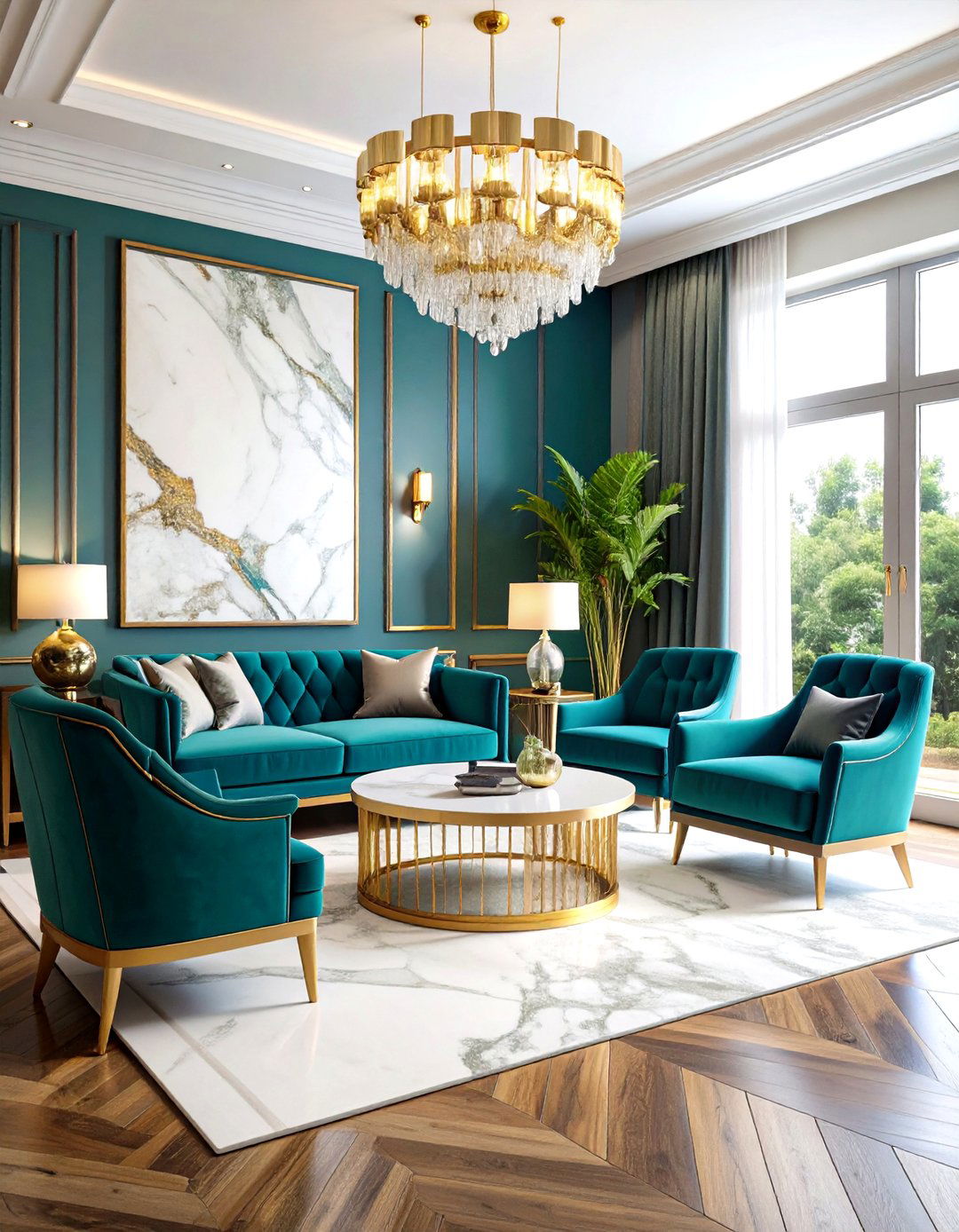
Create an upscale therapeutic environment that rivals boutique hotel design while maintaining professional therapeutic boundaries. This sophisticated therapist room features high-end finishes, carefully curated furniture, and luxury textiles that communicate quality care and attention to detail. Choose premium materials like marble accents, rich hardwood floors, and custom millwork that create visual impact while supporting therapeutic goals. Seating includes plush, designer chairs and a comfortable sofa in rich jewel tones like deep teal or warm burgundy, complemented by gold or brass accent pieces. Professional artwork, fresh flowers, and quality lighting fixtures create ambiance that feels both elevated and welcoming. The layout prioritizes conversation zones while incorporating elegant storage solutions that maintain organization without sacrificing style. This design approach demonstrates commitment to excellence while creating an environment where clients feel valued and deserving of high-quality care and attention.
10. Industrial Chic Therapist Room with Urban Elements
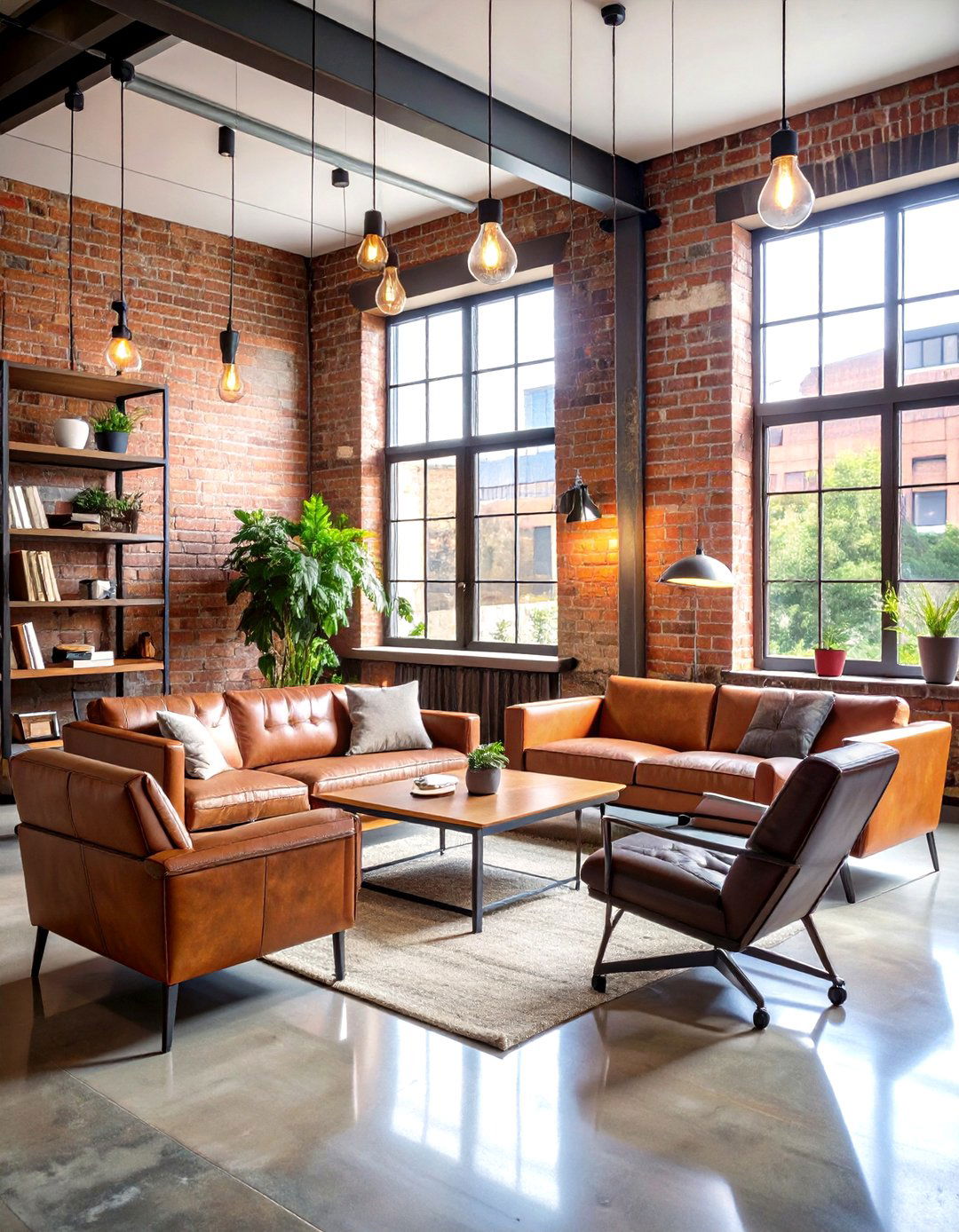
Embrace contemporary urban design through industrial elements that create sophisticated, modern therapeutic spaces appealing to diverse client demographics. This edgy therapist room combines exposed brick walls, steel furniture frames, and polished concrete floors with warm textiles and plants that soften the harder materials. Edison bulb fixtures and track lighting provide adjustable illumination while metal storage units offer organized efficiency. Comfortable seating upholstered in rich leather or soft fabric provides contrast to industrial elements, while area rugs define conversation zones and add warmth. The color palette balances cool industrial tones—charcoal, steel gray, and white—with warm accent colors like burnt orange or deep forest green. Large windows typical of urban lofts maximize natural light while urban landscape views connect to the broader community. This design appeals particularly to younger clients and urban professionals who appreciate contemporary aesthetics.
11. Coastal Therapist Room with Calming Ocean Themes
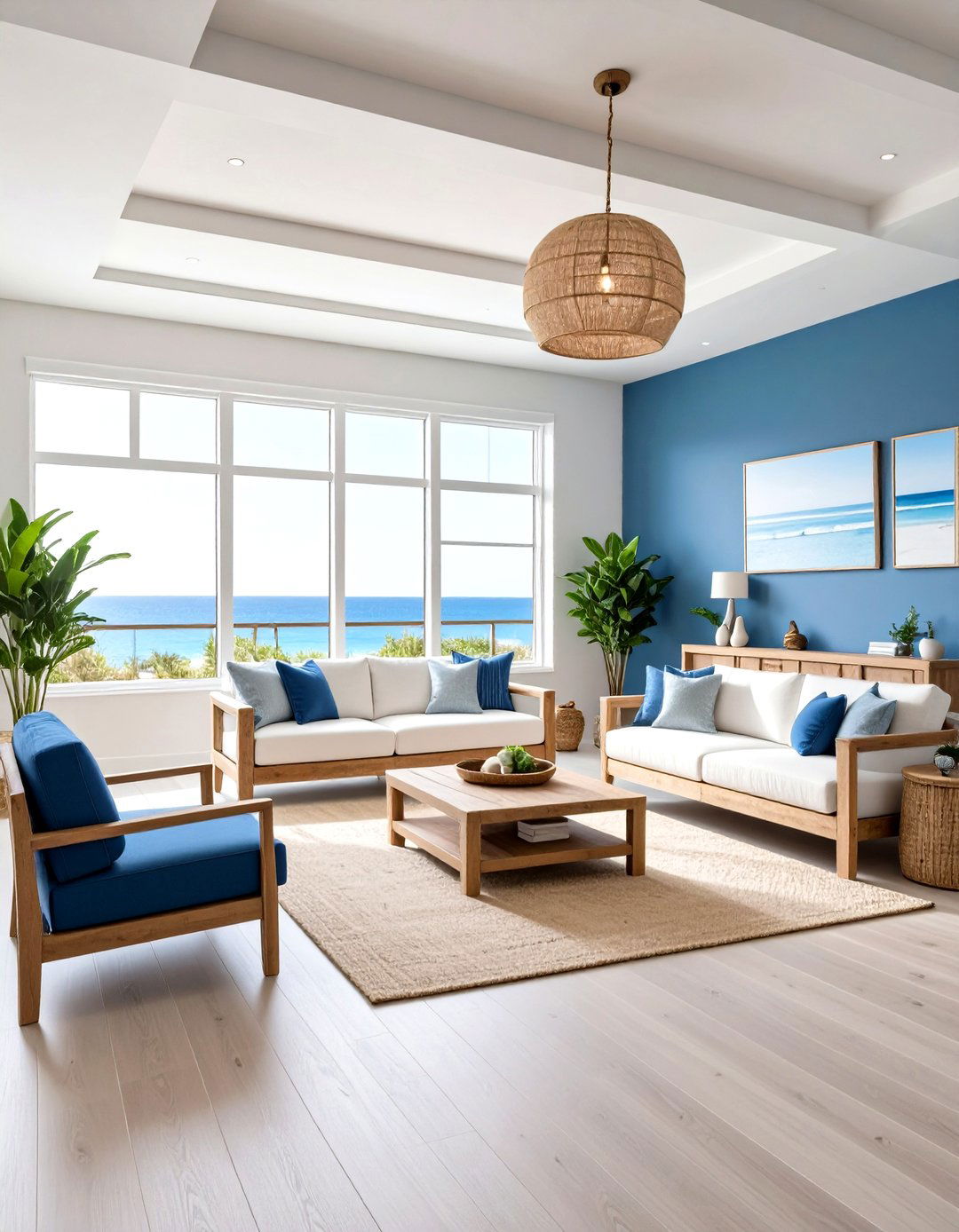
Transform your therapeutic space into a peaceful coastal retreat that harnesses the calming effects of ocean-inspired design elements. This serene therapist room incorporates a soft blue and white color palette reminiscent of sea and sky, with natural textures like driftwood, jute, and woven seagrass that evoke beachside tranquility. Choose furniture with weathered wood finishes and comfortable seating upholstered in coastal blues and sandy beiges. Natural light filters through white or light blue window treatments while table lamps with rope or ceramic bases provide warm evening illumination. Incorporate subtle nautical elements like smooth river rocks, seashells, and ocean photography that promote relaxation without overwhelming the professional atmosphere. Plants like snake plants and pothos in blue ceramic planters add life while maintaining the coastal theme. The overall effect creates a therapeutic environment that naturally reduces stress and promotes feelings of peace and emotional balance.
12. Transitional Therapist Room with Flexible Comfort Zones

Create an adaptable therapeutic environment through transitional design that seamlessly blends traditional and contemporary elements for broad client appeal. This versatile therapist room features classic furniture silhouettes updated with modern fabrics and finishes, creating familiarity while feeling fresh and current. Multiple seating arrangements include a traditional wingback chair, modern sectional sofa, and casual ottoman seating that accommodates different client preferences and therapeutic approaches. The color palette combines timeless neutrals—warm grays, soft whites, and rich navy—with natural wood tones that feel both professional and approachable. Traditional elements like crown molding and classic lighting fixtures blend with contemporary artwork and modern storage solutions. This balanced approach creates comfortable spaces for clients who prefer either formal or relaxed therapeutic settings, while the flexible layout easily adapts to individual therapy, couples counseling, or group sessions, maximizing the room's functionality.
13. Eclectic Therapist Room with Curated Personal Touches
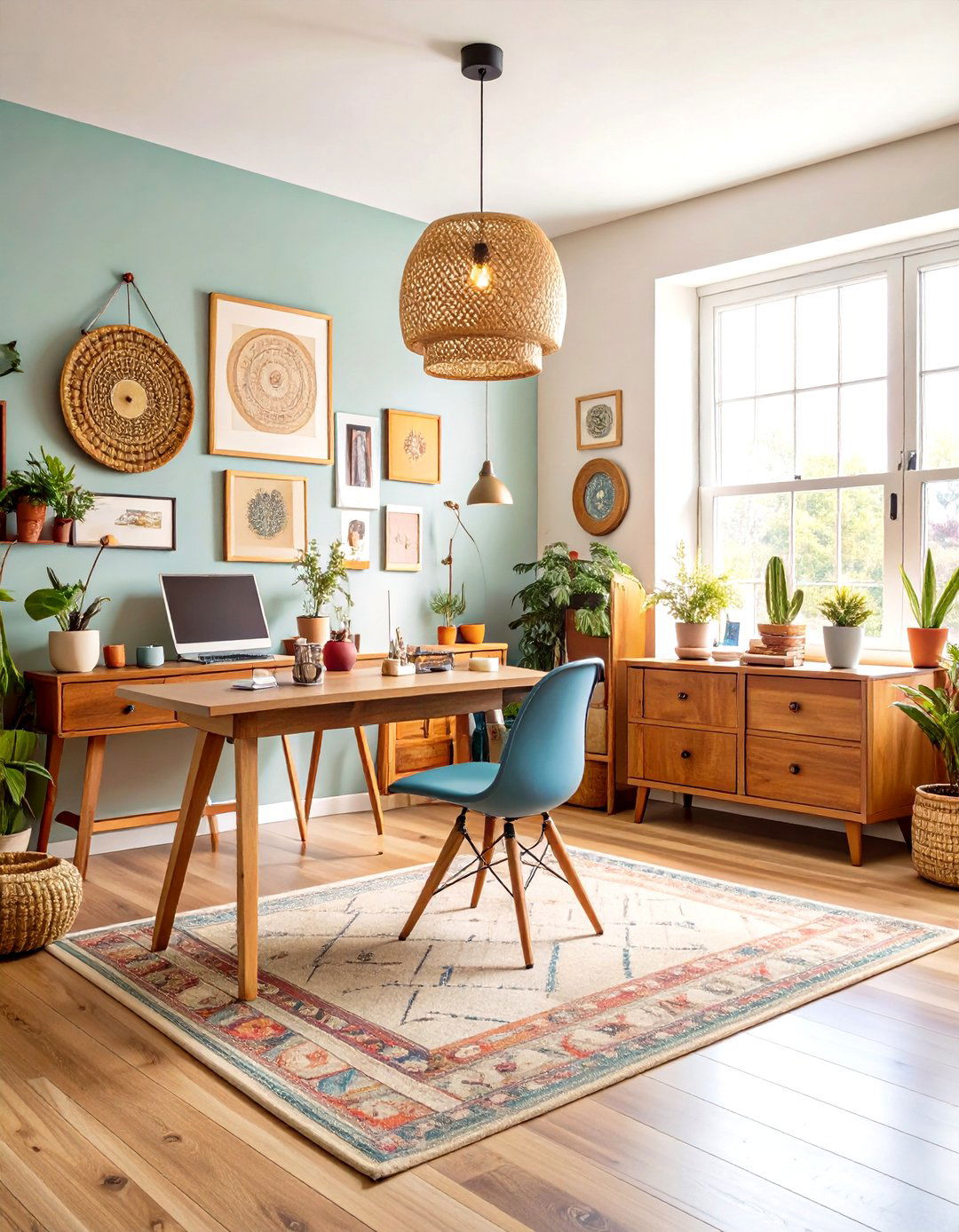
Design a unique therapeutic space that reflects authentic personality while maintaining professional boundaries through carefully curated eclectic elements. This distinctive therapist room combines furniture and decor from different periods and styles, unified by a cohesive color scheme and thoughtful arrangement. Mix vintage pieces like a mid-century modern desk with contemporary seating and traditional artwork, creating visual interest while telling a story about the therapist's background and interests. The color palette serves as the unifying element—perhaps warm neutrals with pops of personality color like deep purple or emerald green—that ties diverse elements together. Personal collections, travel souvenirs, and meaningful artwork create conversation starters while demonstrating authenticity and cultural awareness. Storage solutions include vintage trunks, modern shelving, and antique cabinets that add character while maintaining organization. This approach appeals to clients who appreciate creativity and authenticity in their therapeutic relationships.
14. Family Therapy-Focused Therapist Room with Kid-Friendly Zones

Create a versatile therapeutic space that comfortably accommodates families with children through thoughtful zoning and age-appropriate design elements. This inclusive therapist room features durable, easy-clean materials and furniture designed to withstand active use while maintaining professional appearance. Designate specific areas with child-height seating, washable rugs, and accessible storage for toys and therapeutic tools. Choose rounded-edge furniture in warm, inviting colors that feel safe for children while remaining sophisticated enough for adult clients. The layout includes clear sightlines that allow parents to supervise children during sessions while multiple conversation zones accommodate different family dynamics. Lighting includes both overhead options and table lamps that create cozy areas for intimate family discussions. Storage solutions keep children's materials organized and accessible while maintaining clean surfaces for adult-focused sessions. Color choices balance calming neutrals with cheerful accents that appeal to all family members while supporting therapeutic goals.
15. Senior-Focused Therapist Room with Accessibility Features

Design an age-friendly therapeutic environment that prioritizes comfort, accessibility, and dignity for older adult clients through thoughtful universal design principles. This inclusive therapist room features higher seating with supportive arms, wider pathways for mobility aids, and enhanced lighting that accommodates vision changes. Choose furniture with firm cushions and sturdy construction that provides support while remaining comfortable for extended sessions. The color palette utilizes high-contrast combinations that aid visual processing while avoiding patterns that might cause confusion or eye strain. Flooring materials provide secure footing while acoustic treatments ensure clear communication for clients with hearing impairments. Temperature control systems maintain comfortable environments while natural light supplemented by task lighting reduces shadows and glare. Storage solutions include lower shelving and easy-reach amenities while grab bars and stable furniture placement ensure safety. This design demonstrates respect for aging clients while creating therapeutic environments that support their unique needs and life experiences.
16. Group Therapy-Optimized Therapist Room with Flexible Seating
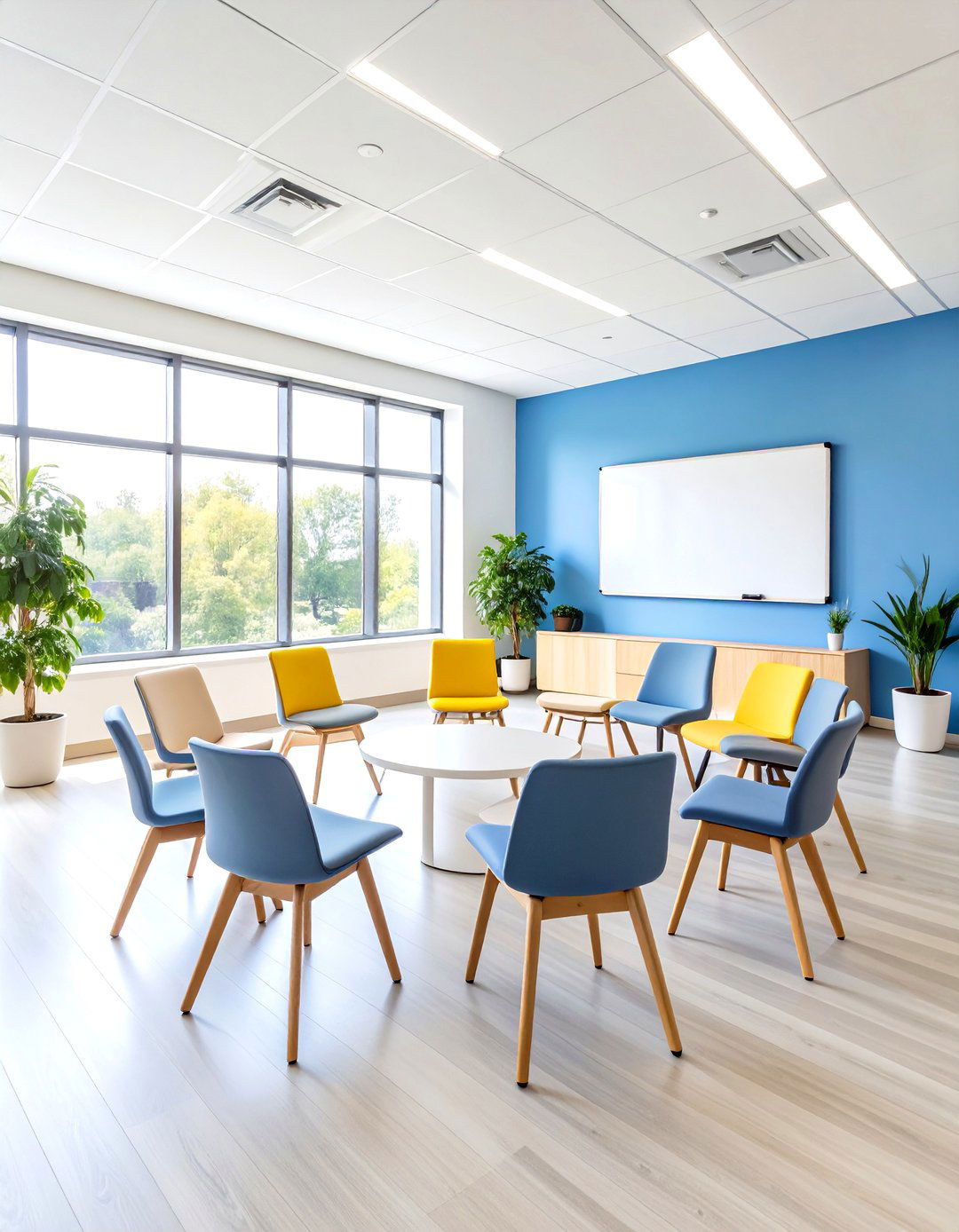
Create a dynamic therapeutic space specifically designed for group therapy sessions through flexible furniture arrangements and acoustic considerations. This versatile therapist room features modular seating that easily reconfigures from circular arrangements for group discussions to smaller clusters for breakout activities. Choose lightweight yet sturdy chairs that participants can easily move while maintaining comfort during longer sessions. The layout includes open central areas for group exercises and activities while wall storage keeps therapeutic materials organized and accessible. Acoustic treatments ensure privacy and sound quality while proper ventilation accommodates larger groups. Lighting design includes both general illumination and focused task lighting for activities or presentations. The color palette utilizes calming yet energizing tones—soft blues with warm yellow accents—that promote engagement while reducing anxiety. Multiple whiteboards or flip chart areas support interactive therapeutic techniques while technology integration allows multimedia presentations. This design maximizes the therapeutic potential of group dynamics while maintaining comfortable, supportive environments for all participants.
17. Mind-Body Therapist Room with Movement Integration
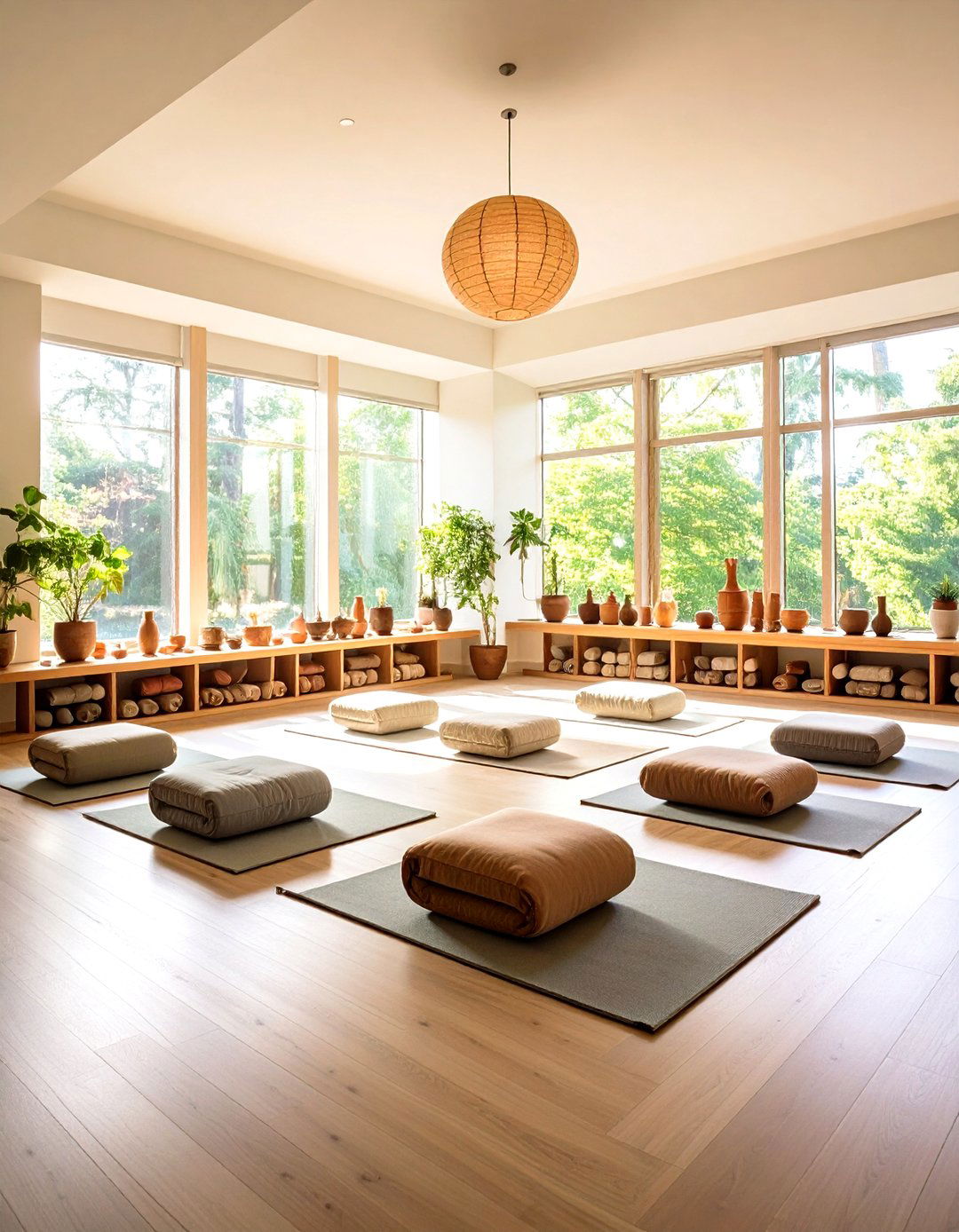
Design a holistic therapeutic space that accommodates both traditional talk therapy and movement-based healing modalities through open layouts and flexible equipment storage. This innovative therapist room features clear floor space for yoga, meditation, or somatic therapy practices while maintaining comfortable seating areas for conversation. Choose easily movable furniture that creates open areas when needed while providing standard therapeutic settings for traditional sessions. Flooring includes soft, non-slip surfaces suitable for movement work while wall-mounted storage keeps mats, props, and therapeutic tools organized yet accessible. The color palette draws from nature—earthy greens, warm browns, and soft golds—that support both mental and physical wellness. Lighting design includes dimmable options for different therapeutic modalities while sound systems support guided meditations or movement exercises. Air circulation systems ensure comfort during active sessions while easy-clean surfaces maintain hygiene. This approach recognizes the connection between mental and physical health, creating therapeutic environments that address whole-person wellness.
18. Telehealth-Enhanced Therapist Room with Digital Integration
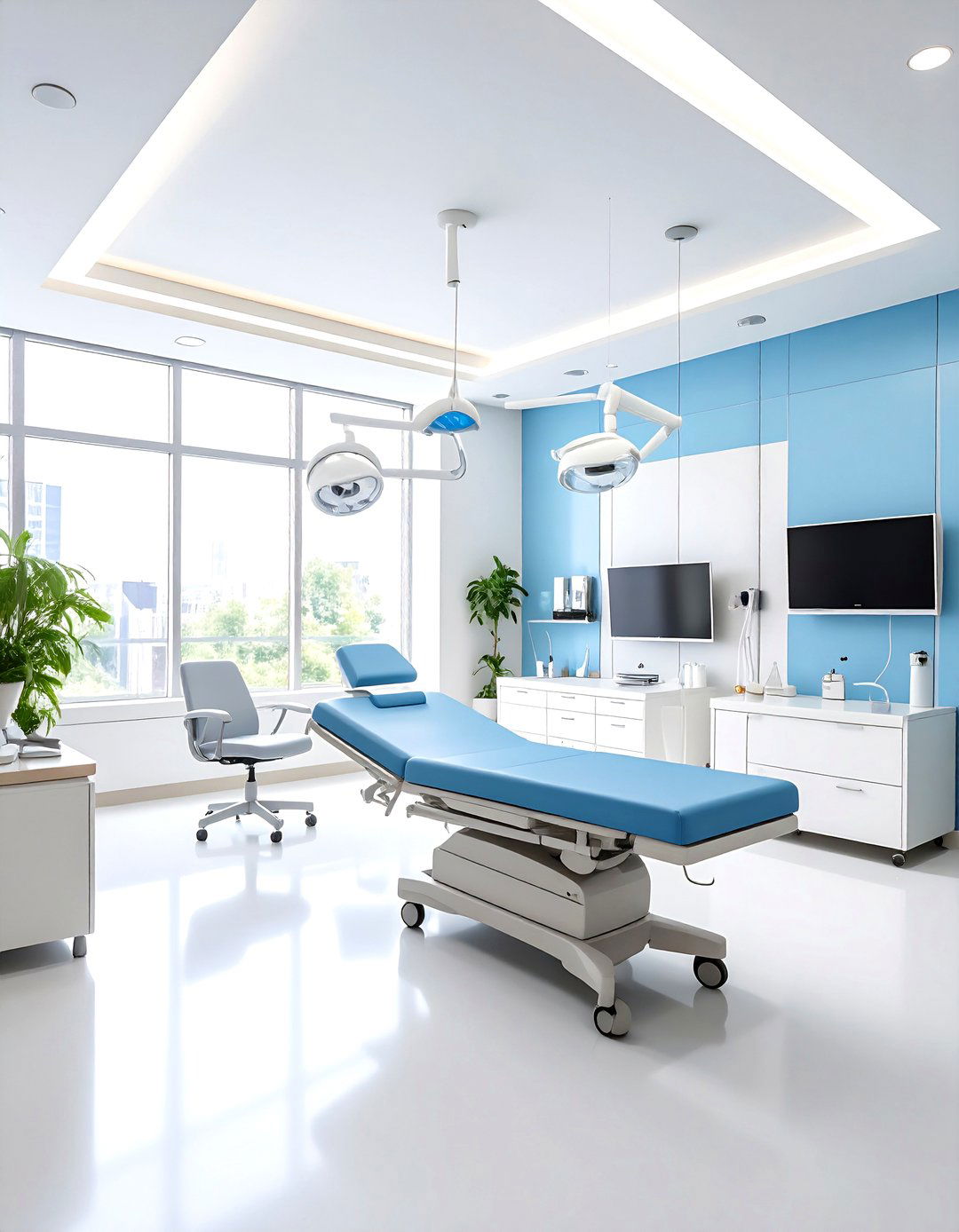
Create a modern therapeutic space optimized for both in-person and virtual therapy sessions through strategic technology integration and design considerations. This hybrid therapist room features professional lighting setups that ensure quality video calls while maintaining comfortable in-person environments. Position seating to optimize camera angles while providing attractive, non-distracting backgrounds for virtual sessions. Technology infrastructure includes high-quality audio systems, reliable internet connectivity, and discrete equipment storage that maintains the room's therapeutic atmosphere. The color palette utilizes camera-friendly tones—soft blues, warm grays, and neutral whites—that appear well on video while creating calming in-person environments. Acoustic treatments ensure clear audio transmission while maintaining privacy for neighboring spaces. Flexible furniture arrangements accommodate both individual virtual sessions and in-person meetings while storage solutions keep technology organized yet accessible. This design approach meets evolving client needs while demonstrating adaptability and technological competence in modern therapeutic practice.
19. Meditation-Centered Therapist Room with Mindfulness Elements
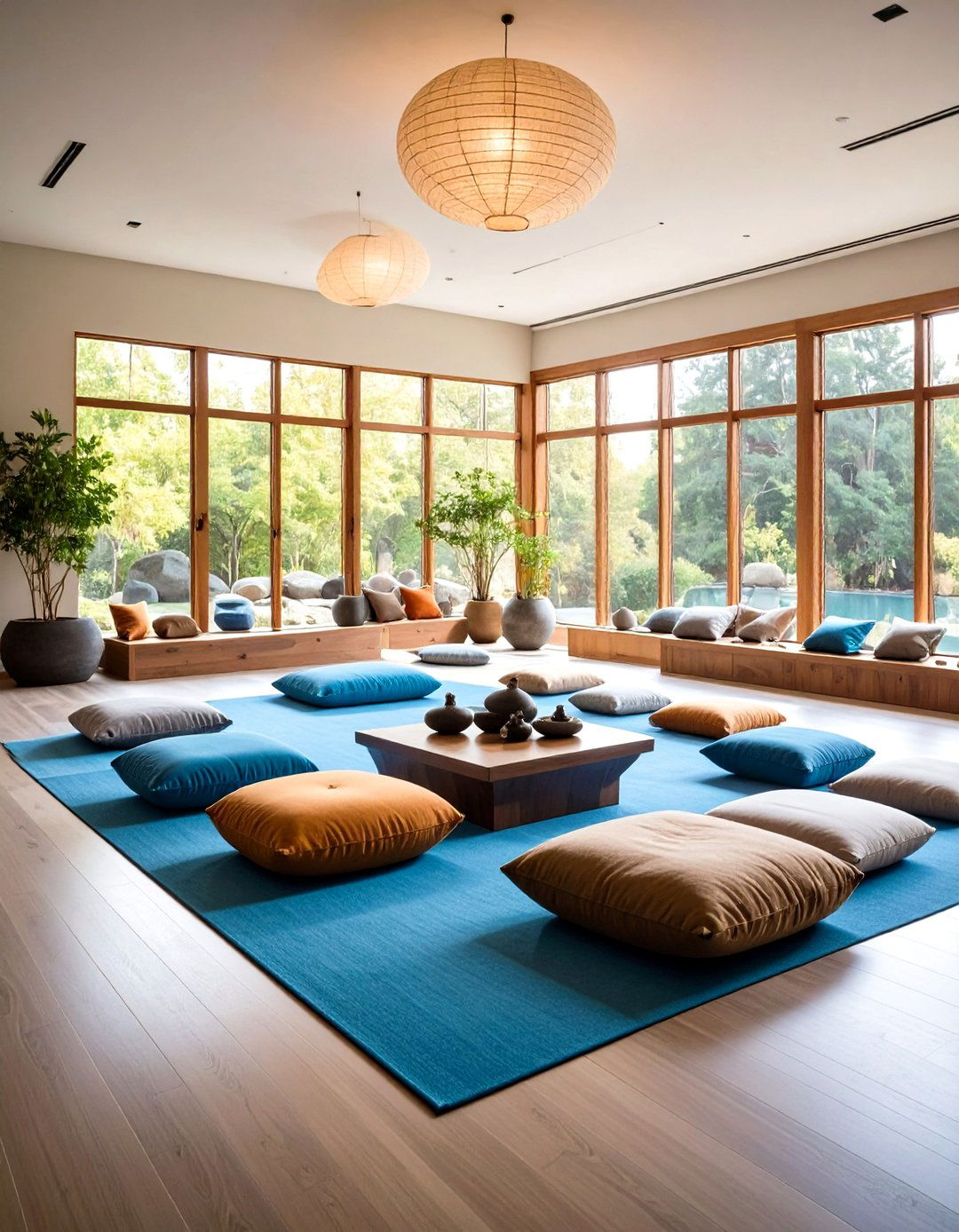
Transform your therapeutic space into a mindfulness sanctuary that integrates meditation practices with traditional therapy through contemplative design elements. This peaceful therapist room features designated meditation areas with floor cushions, low seating options, and minimal visual distractions that support focused awareness practices. Natural elements like smooth stones, small water features, and carefully chosen plants create sensory anchors for mindfulness exercises. The color palette emphasizes calming neutrals—soft grays, warm whites, and muted earth tones—that promote mental clarity and emotional balance. Lighting design includes natural sources supplemented by adjustable warm LED systems that create optimal conditions for different therapeutic activities. Acoustic considerations ensure quiet environments while subtle aromatherapy through essential oil diffusers enhances the contemplative atmosphere. Storage solutions keep meditation props and therapeutic materials organized while maintaining clean, uncluttered surfaces. This design supports therapists who integrate mindfulness-based interventions while creating environments that naturally encourage present-moment awareness and inner peace.
20. Therapeutic Garden Therapist Room with Indoor-Outdoor Connection
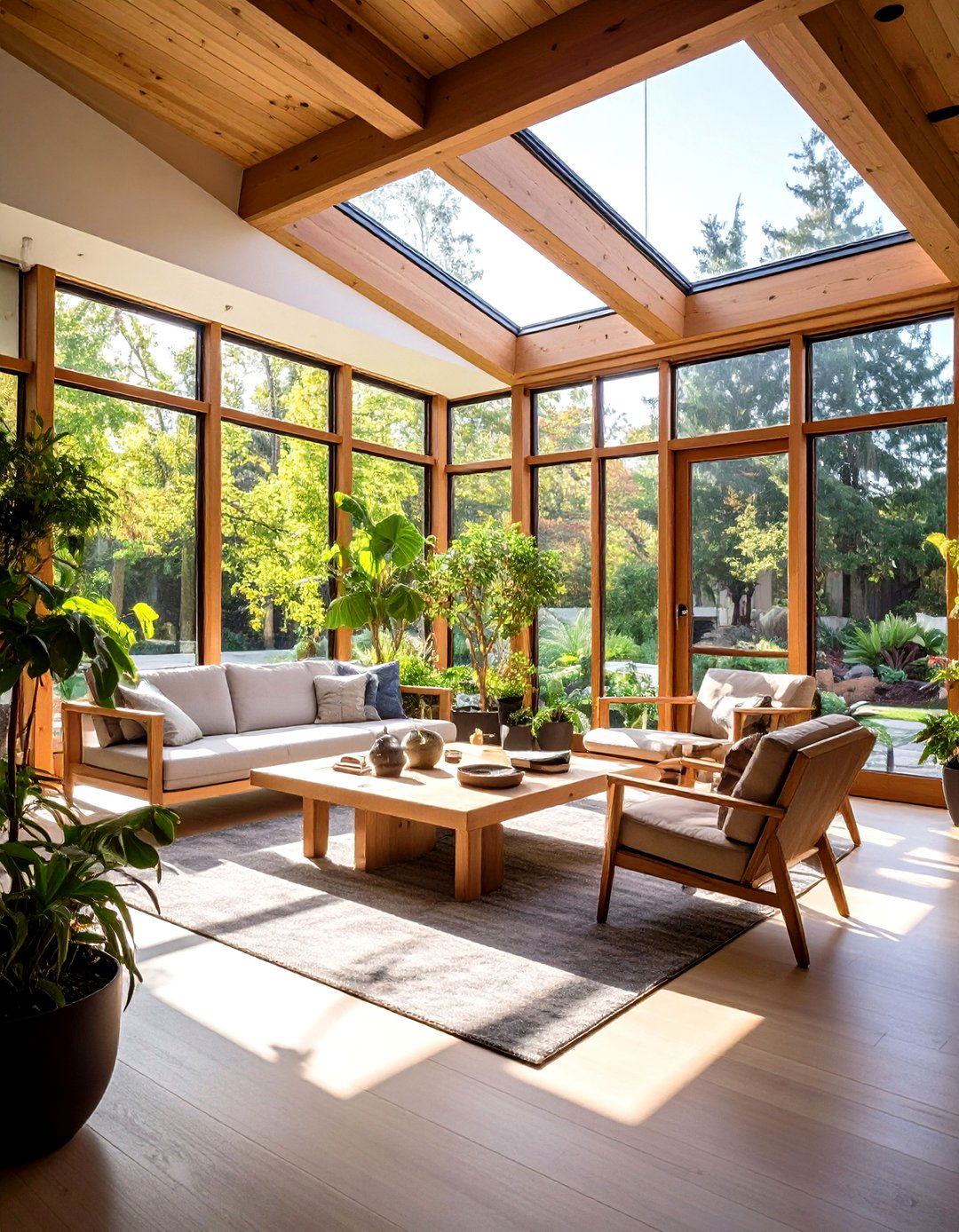
Create a unique therapeutic environment that blurs the boundaries between indoor and outdoor spaces through extensive plant integration and natural materials. This innovative therapist room features large windows or glass doors opening to private garden spaces while interior design incorporates living plants, natural stone, and wood elements that create seamless indoor-outdoor flow. Multiple plant varieties at different heights create layered natural environments while natural materials like stone flooring and wooden beams reinforce the garden connection. Seating options include both traditional indoor furniture and weather-resistant pieces that allow sessions to move outdoors when appropriate. The color palette draws directly from garden settings—various greens, earth browns, and sky blues—that change with seasonal plantings and natural light variations. Water features provide gentle sound masking while improved air quality from extensive plant life enhances the therapeutic environment. This design approach recognizes nature's healing power while creating flexible therapeutic spaces that adapt to different client needs and seasonal changes, maximizing the benefits of biophilic design principles.
Conclusion:
Creating effective therapist room designs requires balancing multiple considerations including client comfort, therapeutic goals, and professional requirements. These twenty design concepts demonstrate that therapeutic environments can be both beautiful and functional while supporting diverse client needs and therapeutic approaches. From biophilic sanctuaries to trauma-informed spaces, each design theme offers unique benefits that enhance the therapeutic process. The key lies in understanding your client population, therapeutic modality, and personal style to create authentic environments that promote healing, trust, and meaningful connections. Successful therapeutic spaces ultimately serve as silent partners in the healing journey, supporting both client well-being and professional effectiveness.


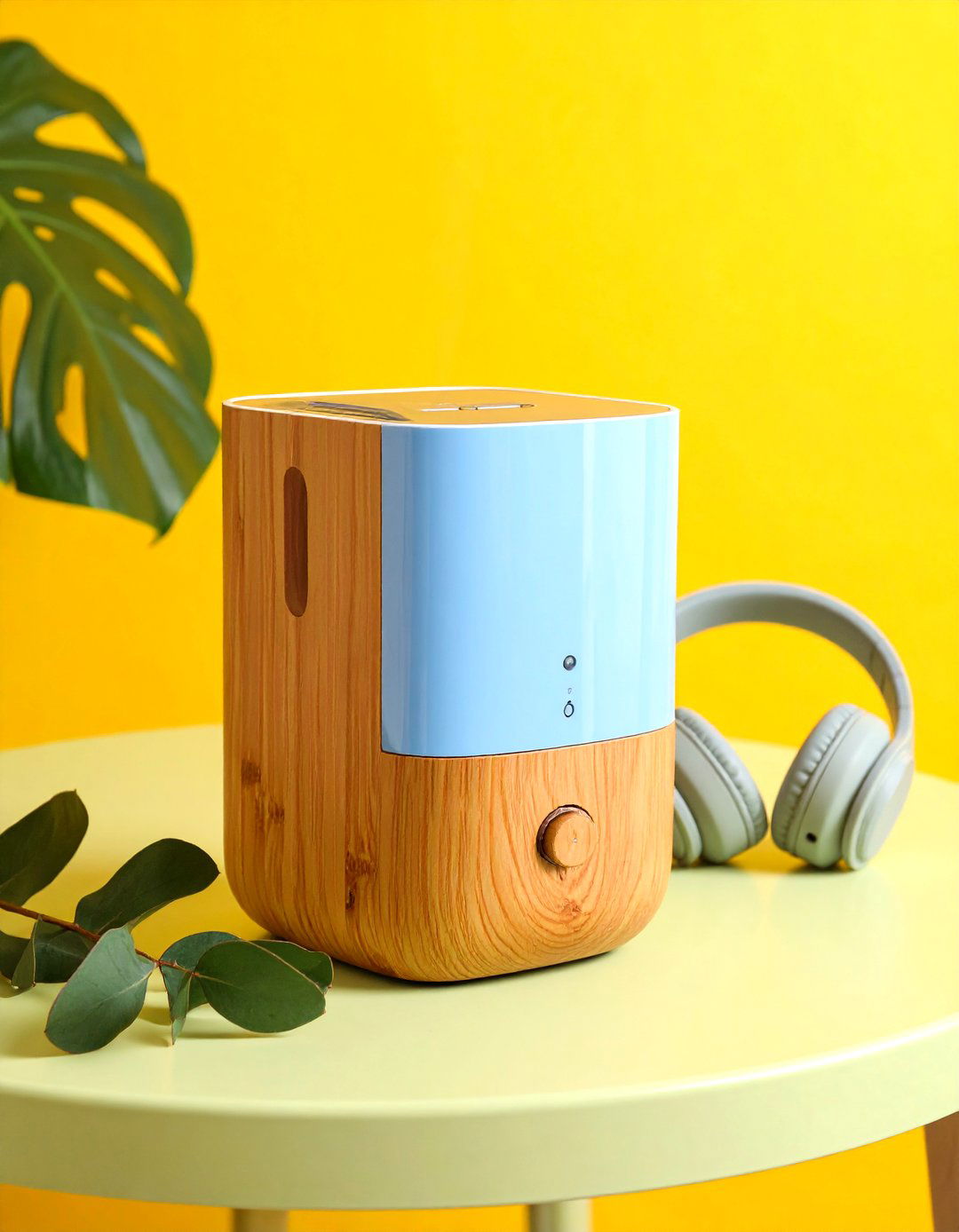
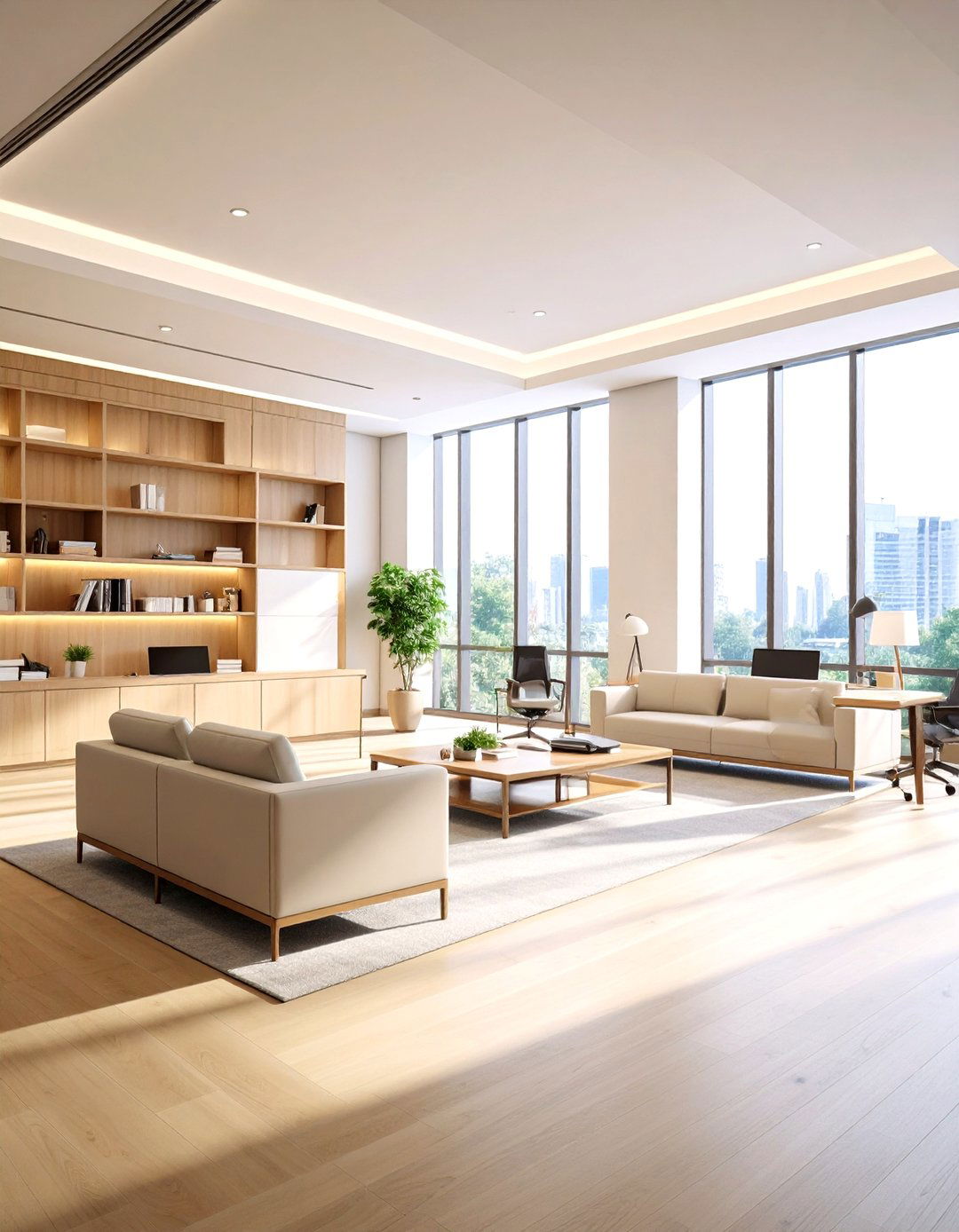
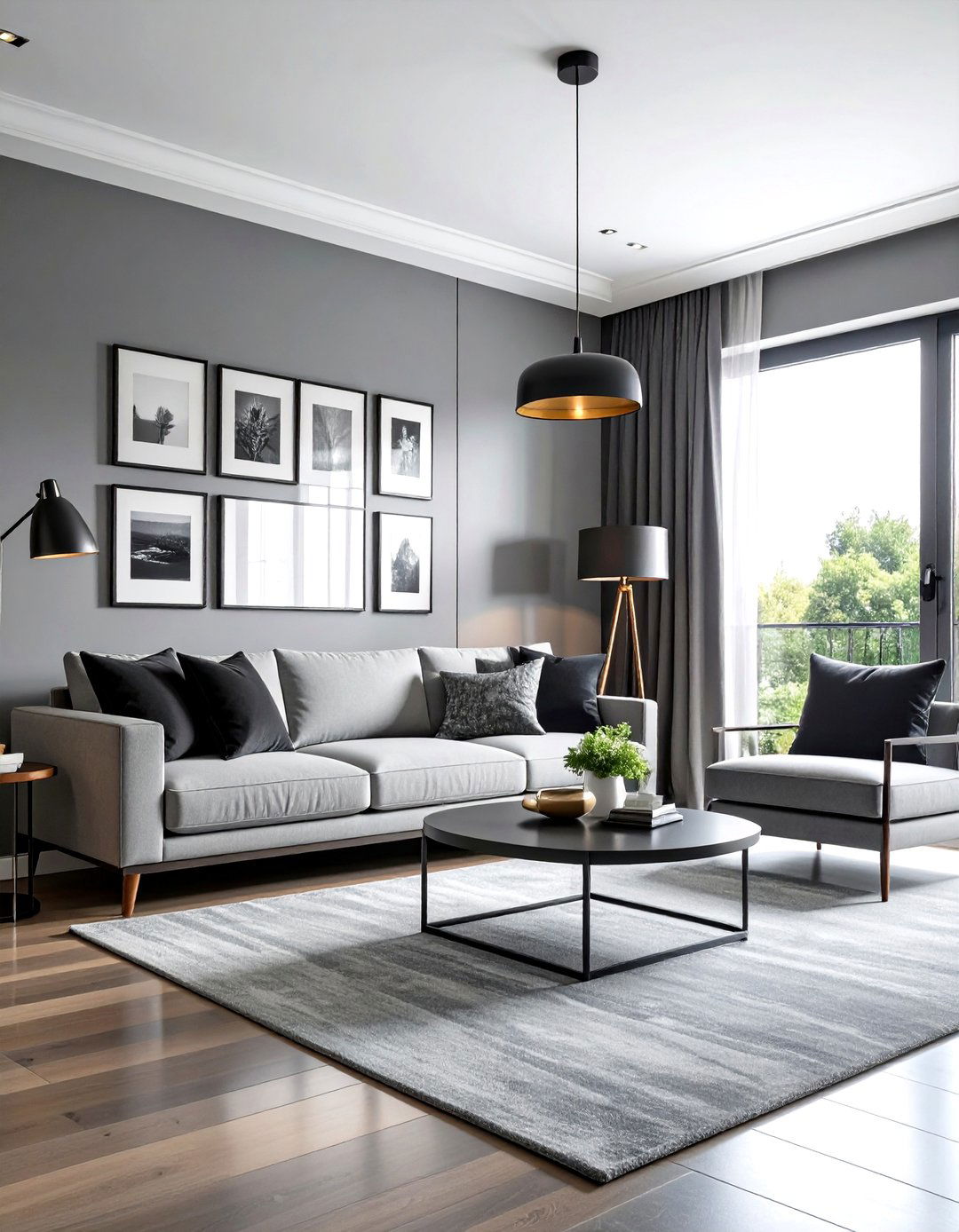
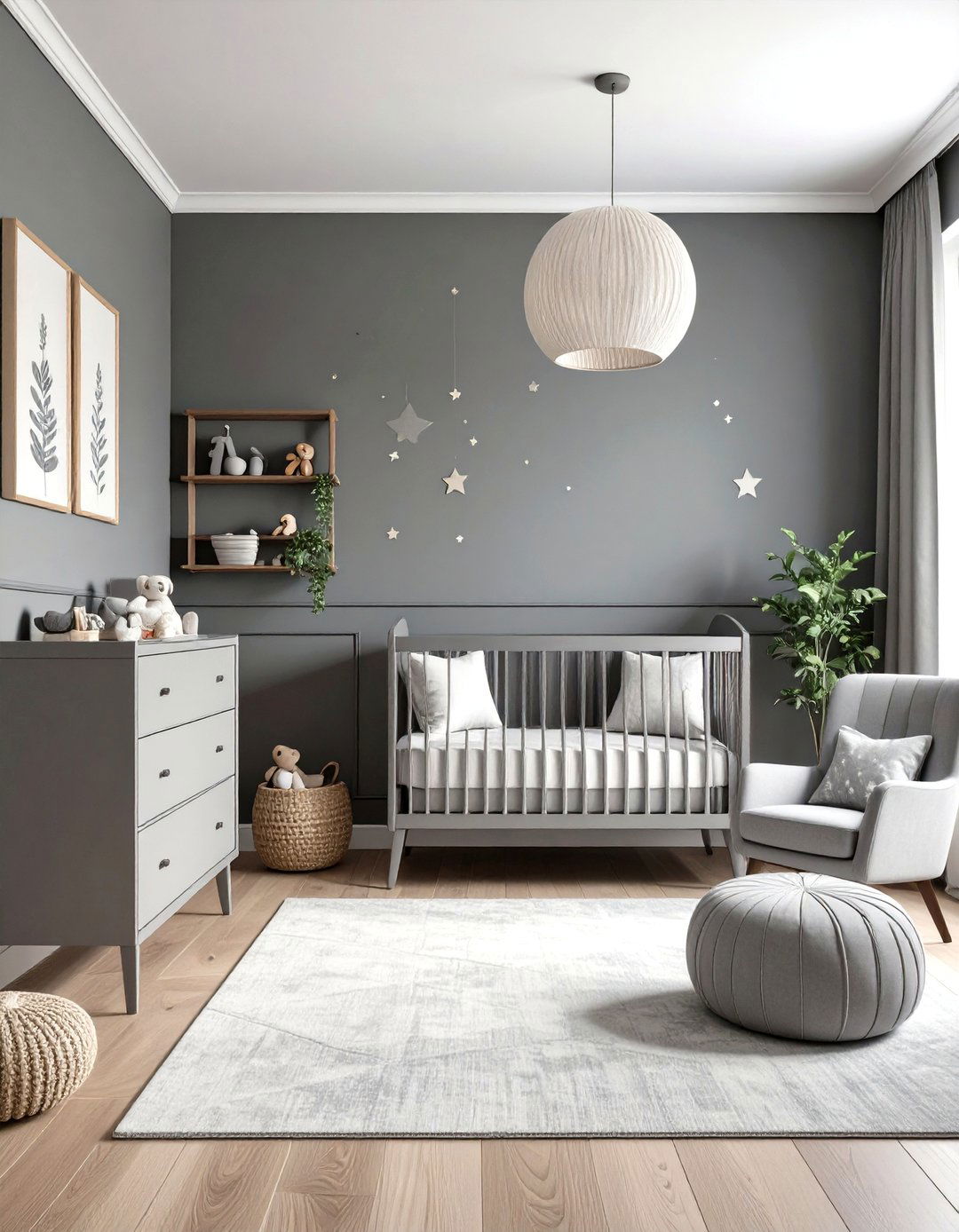
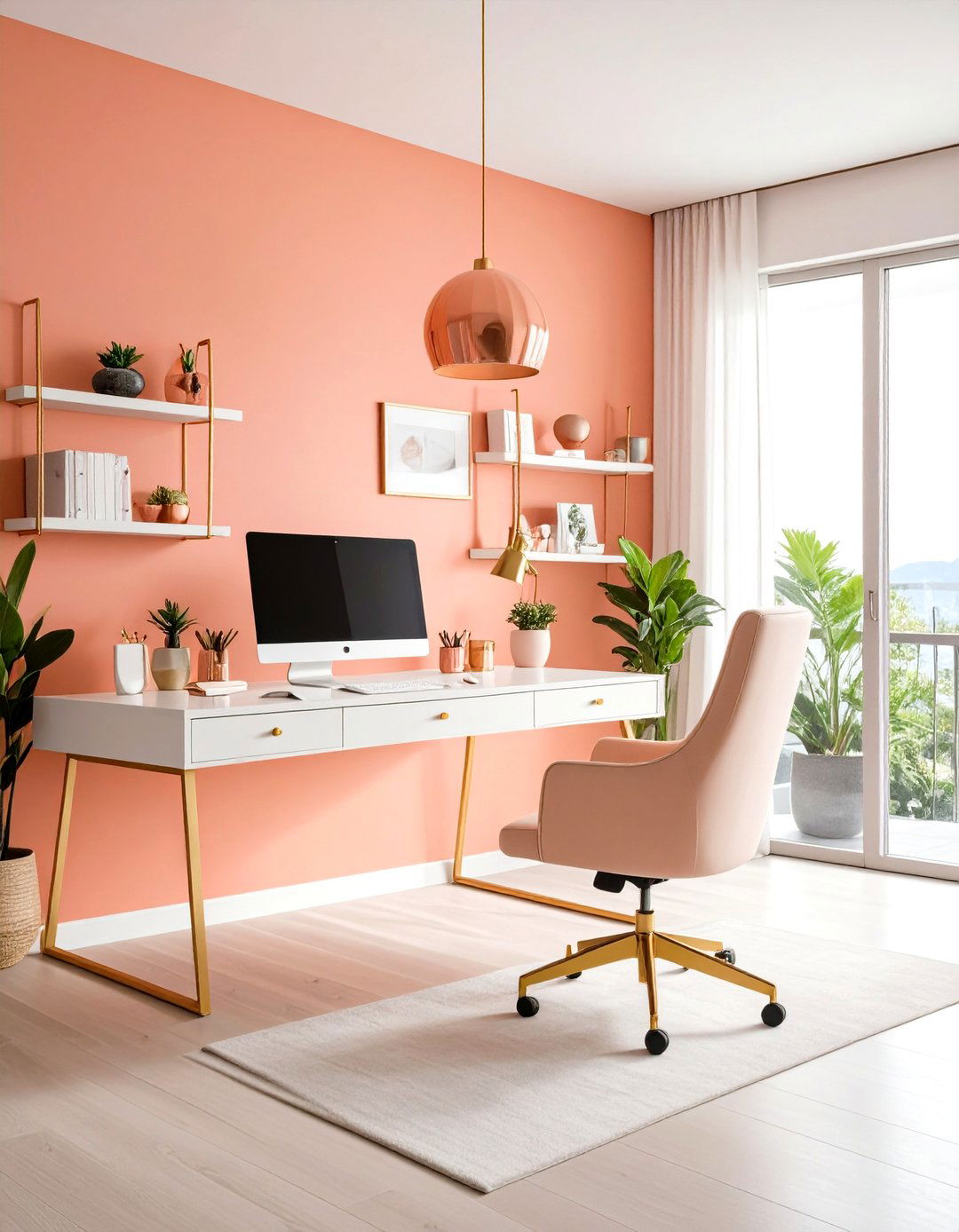
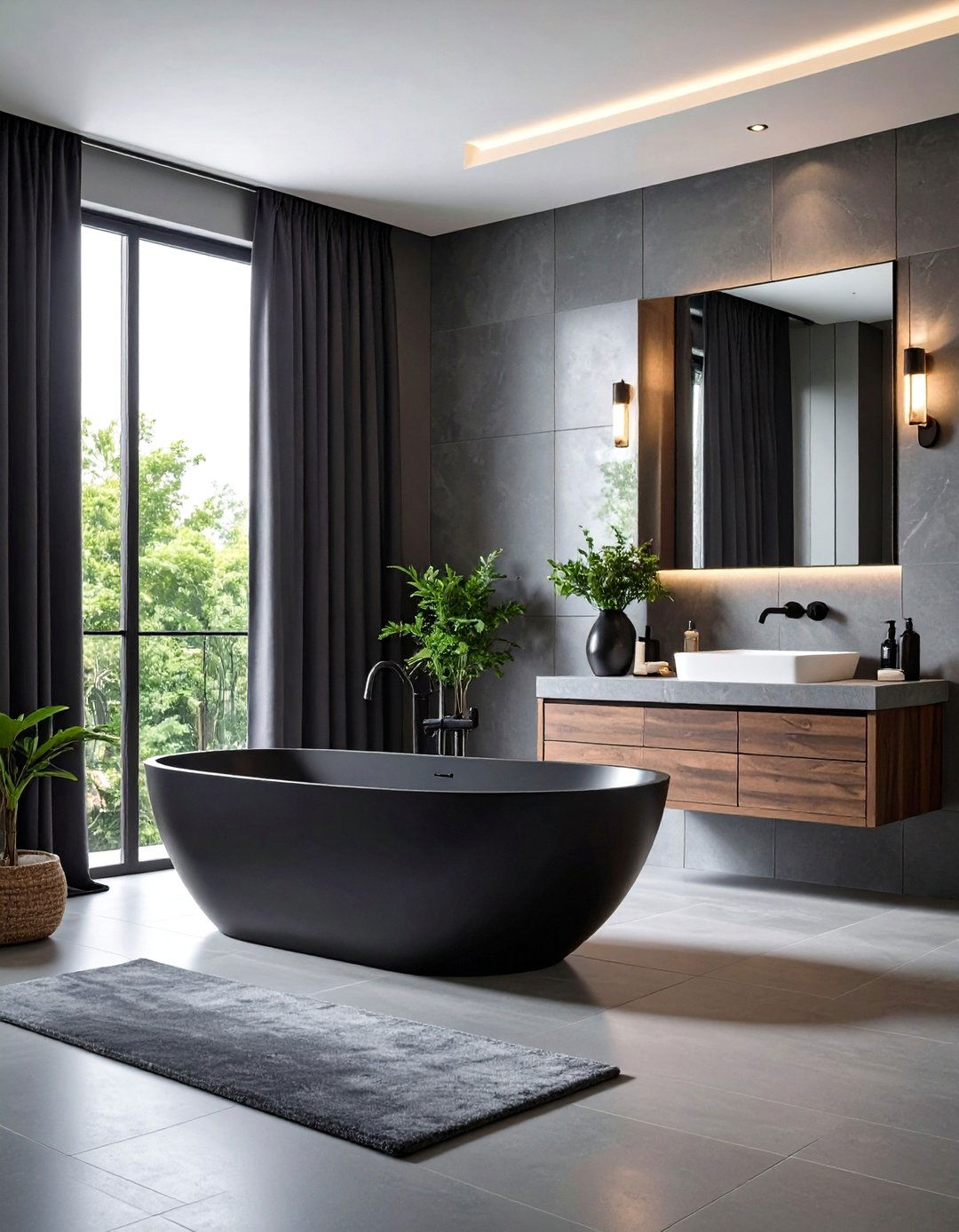
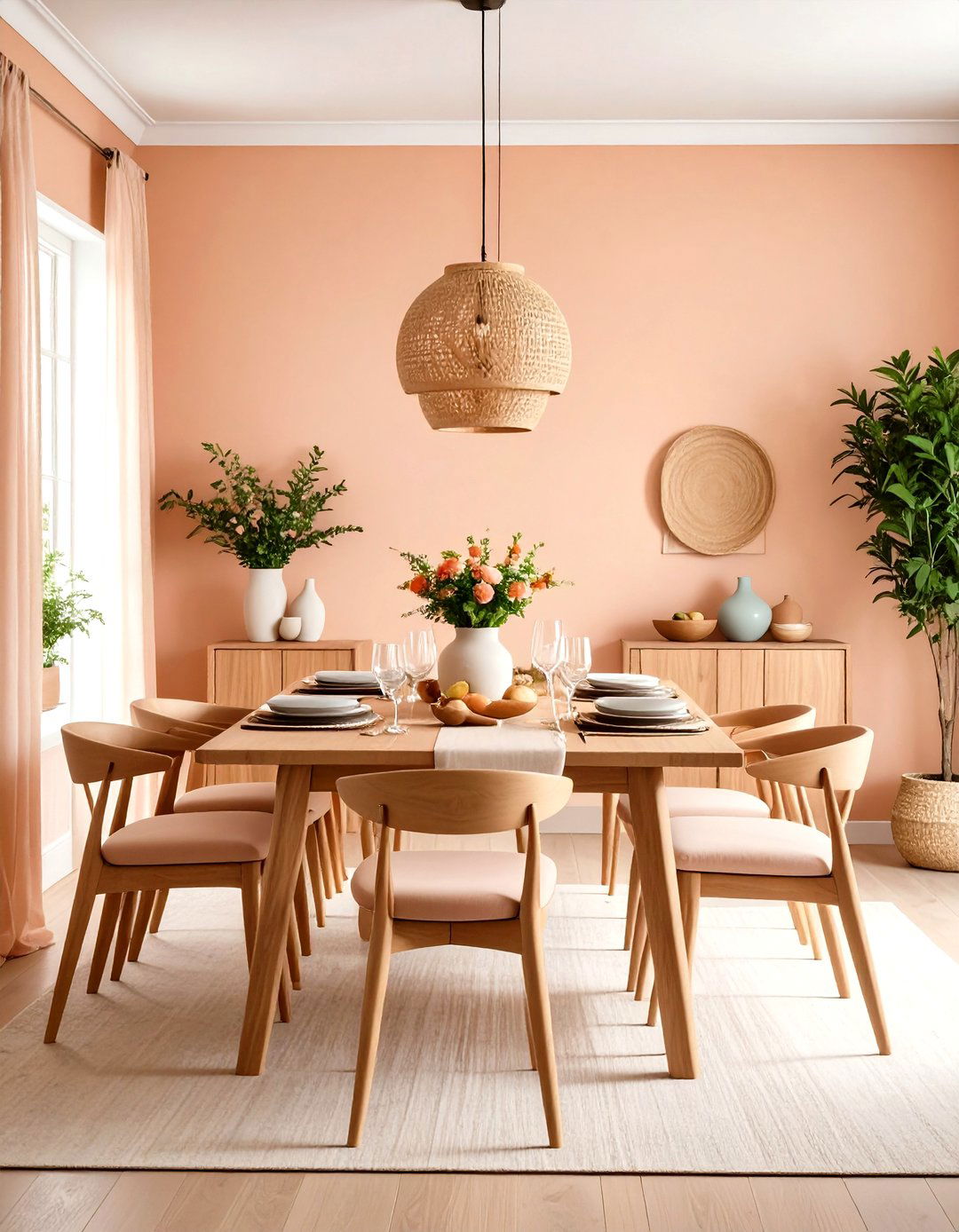

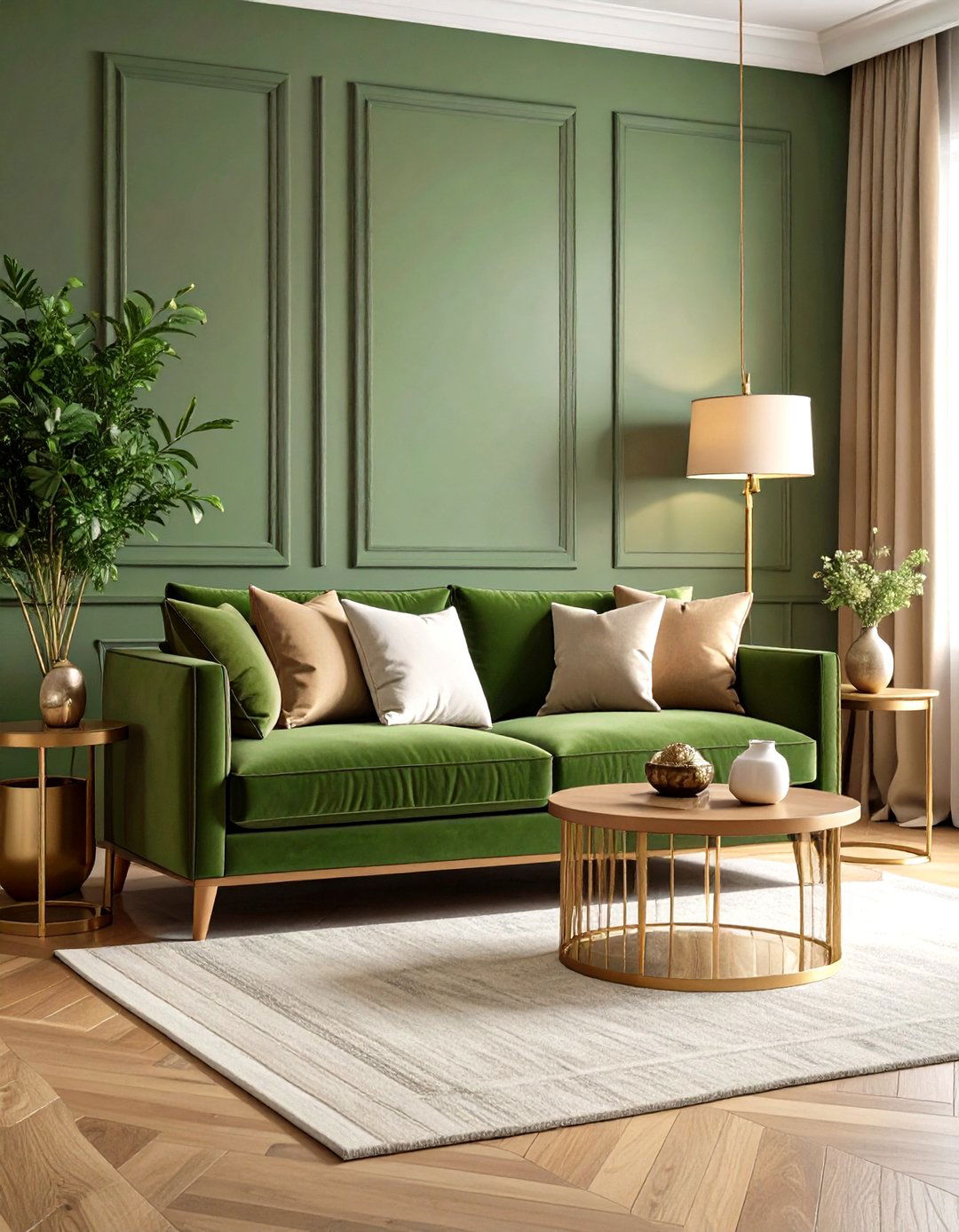
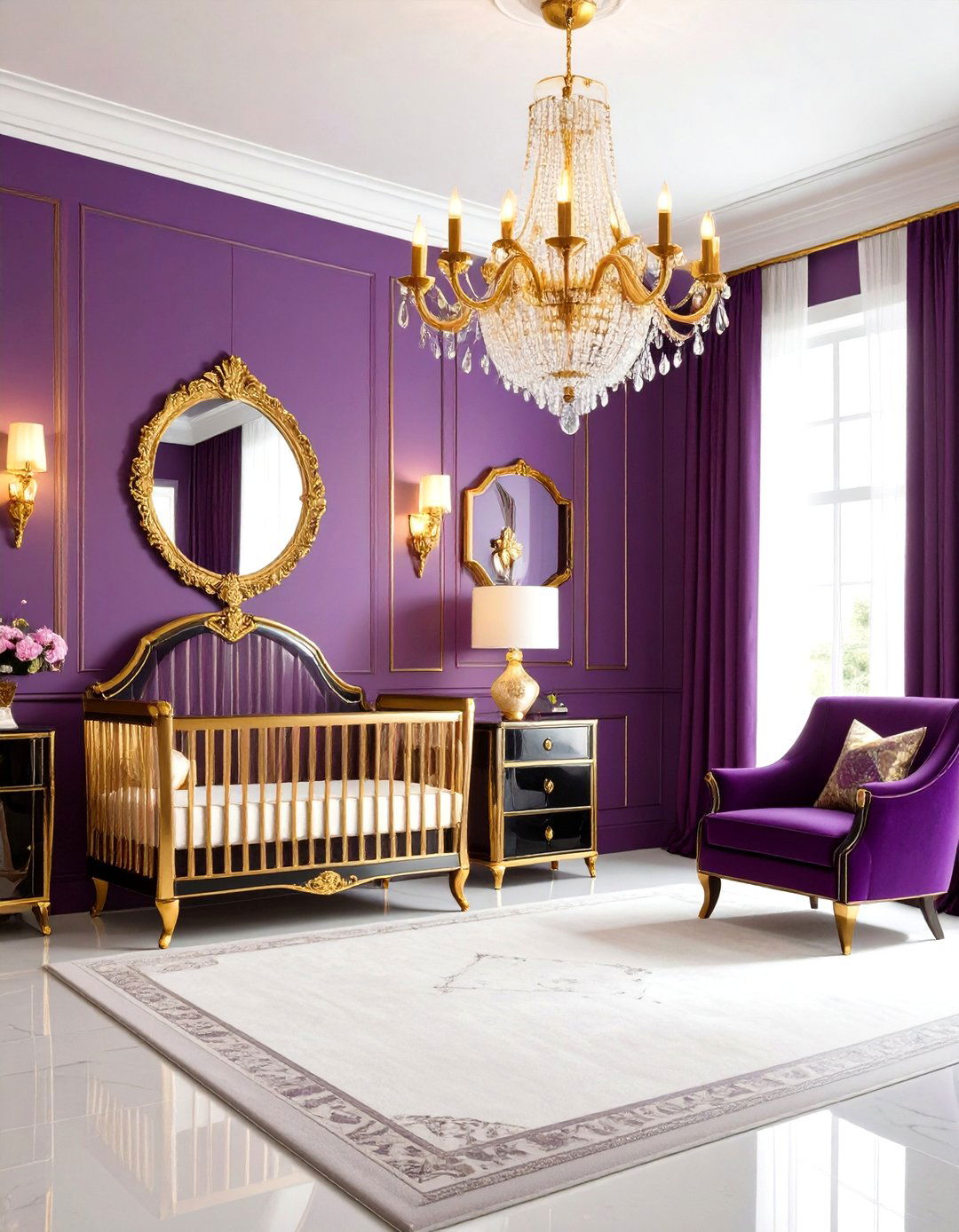
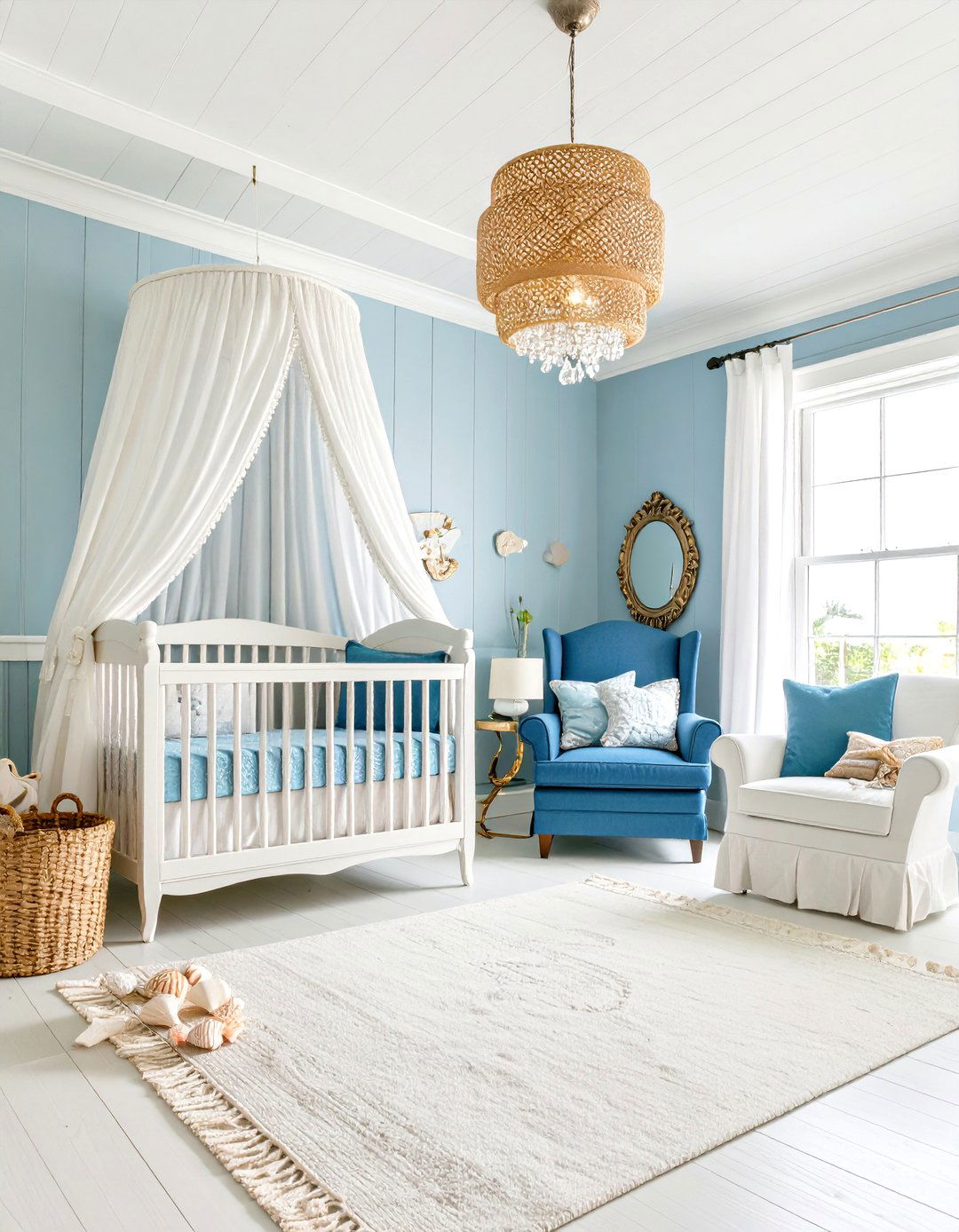
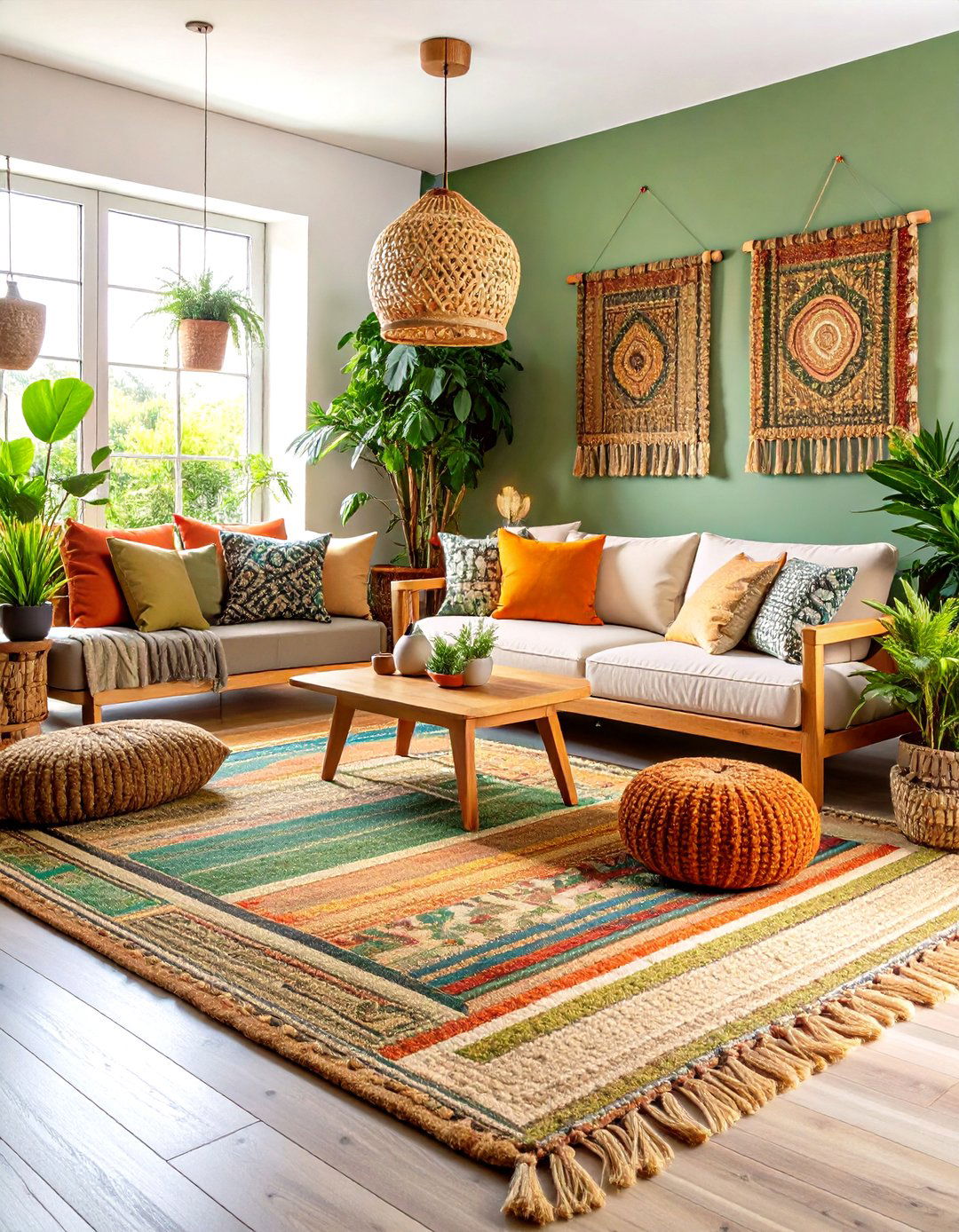

Leave a Reply